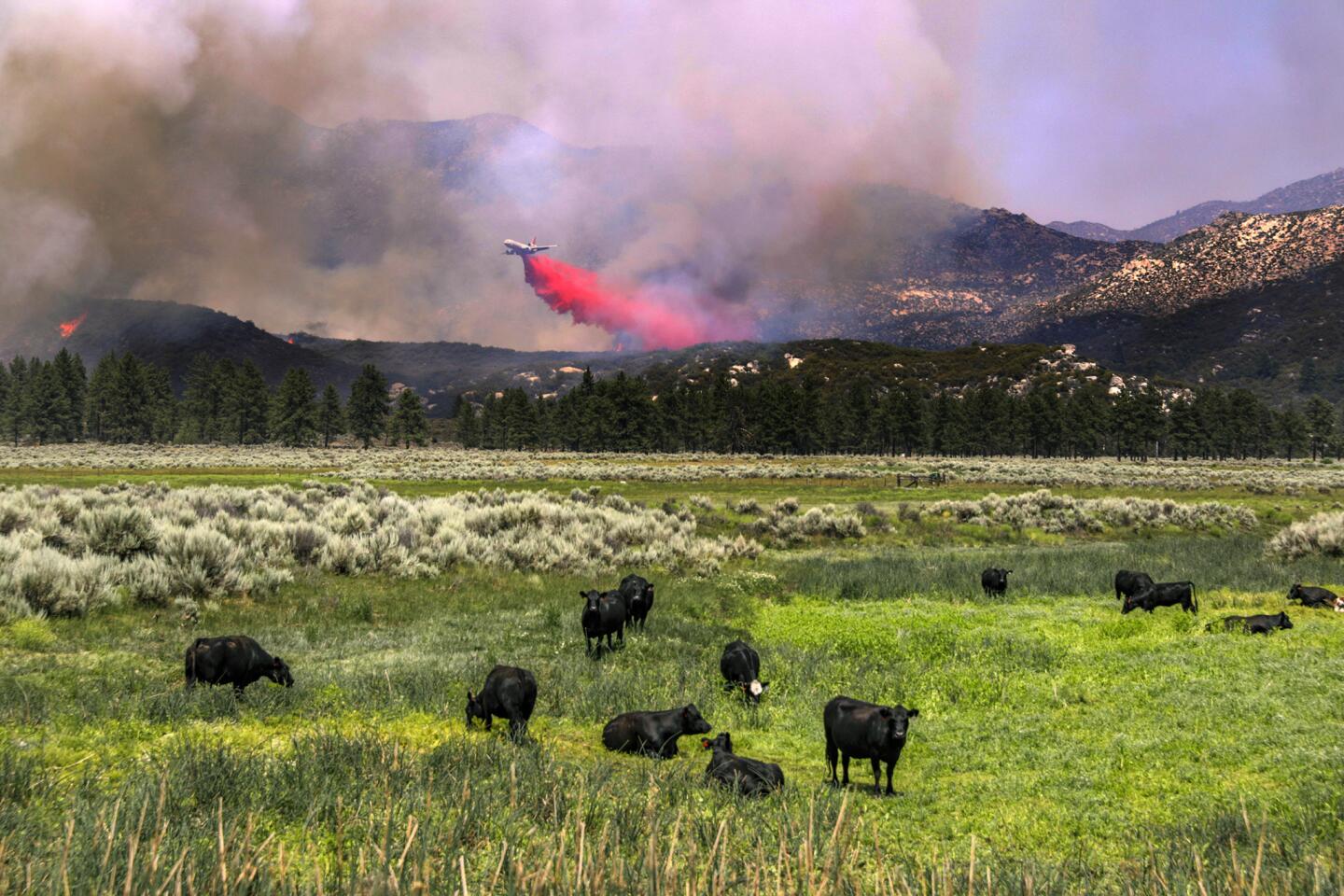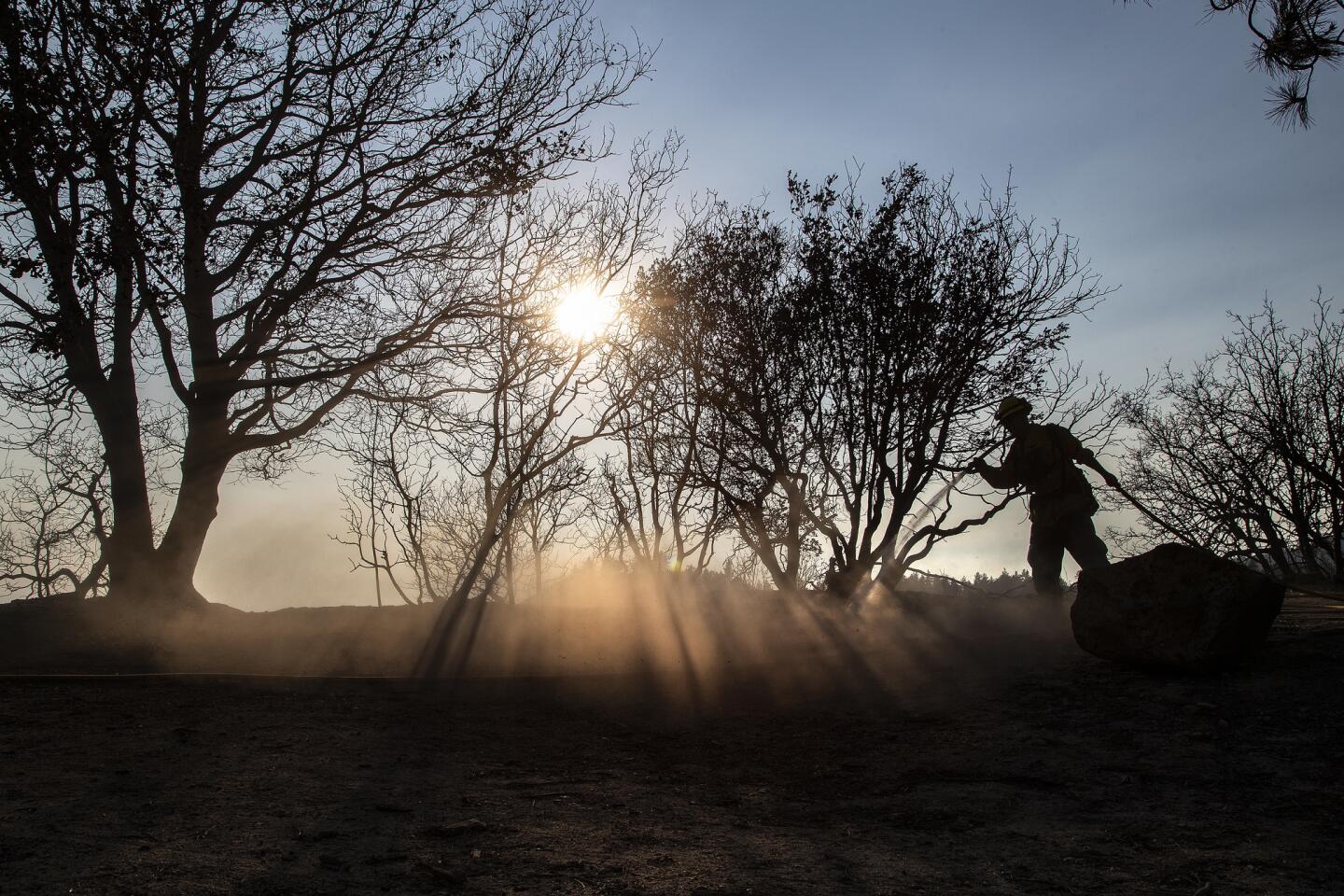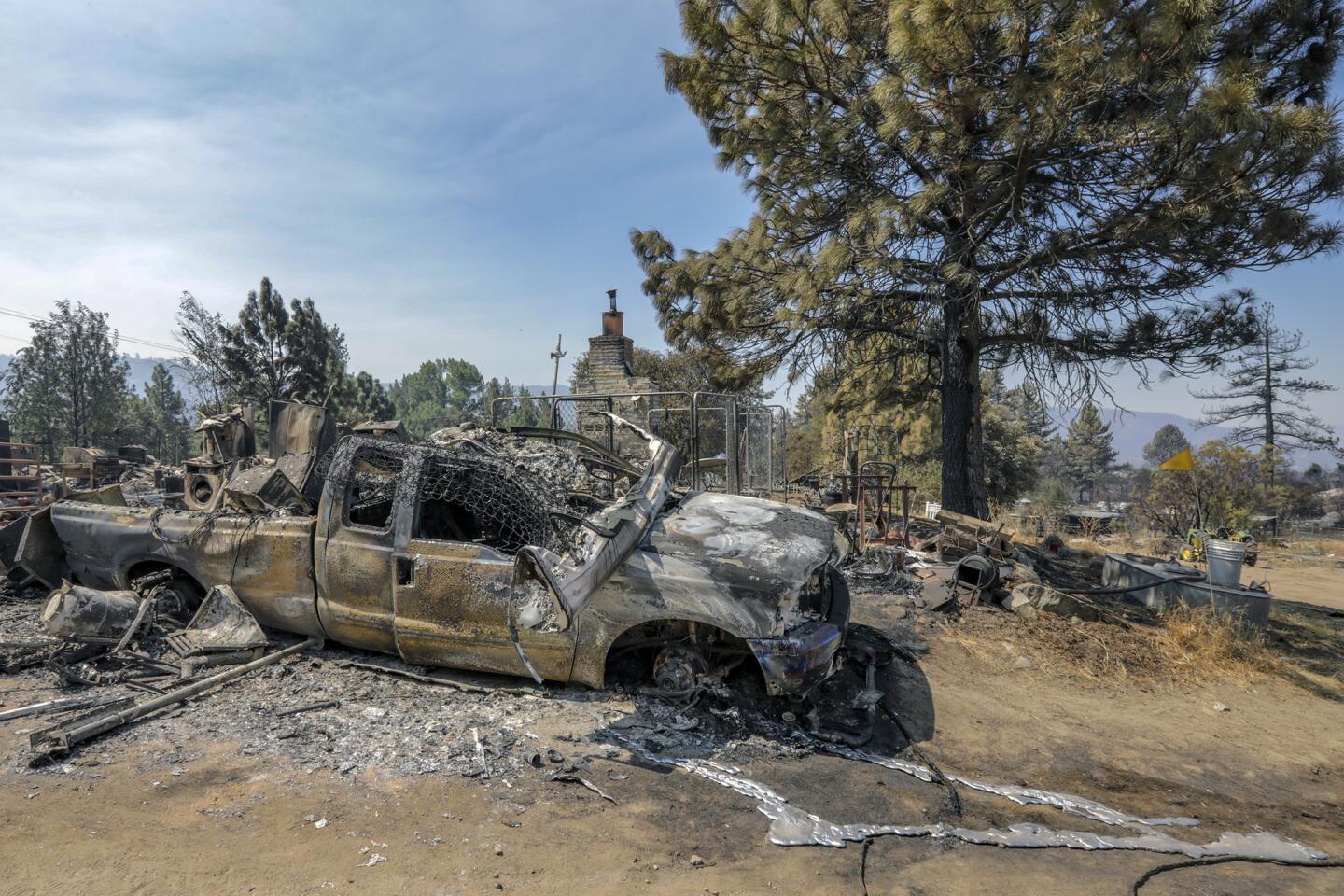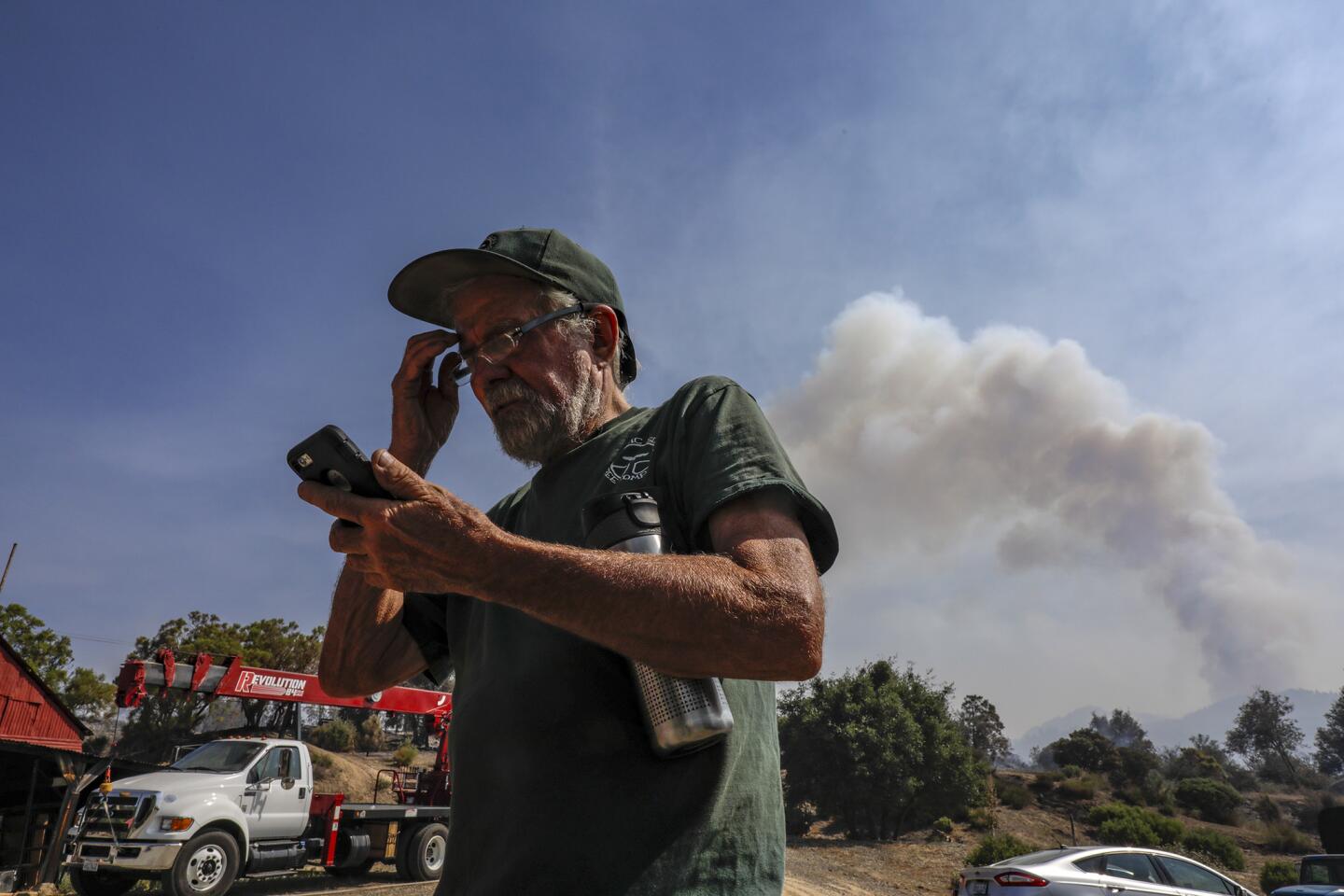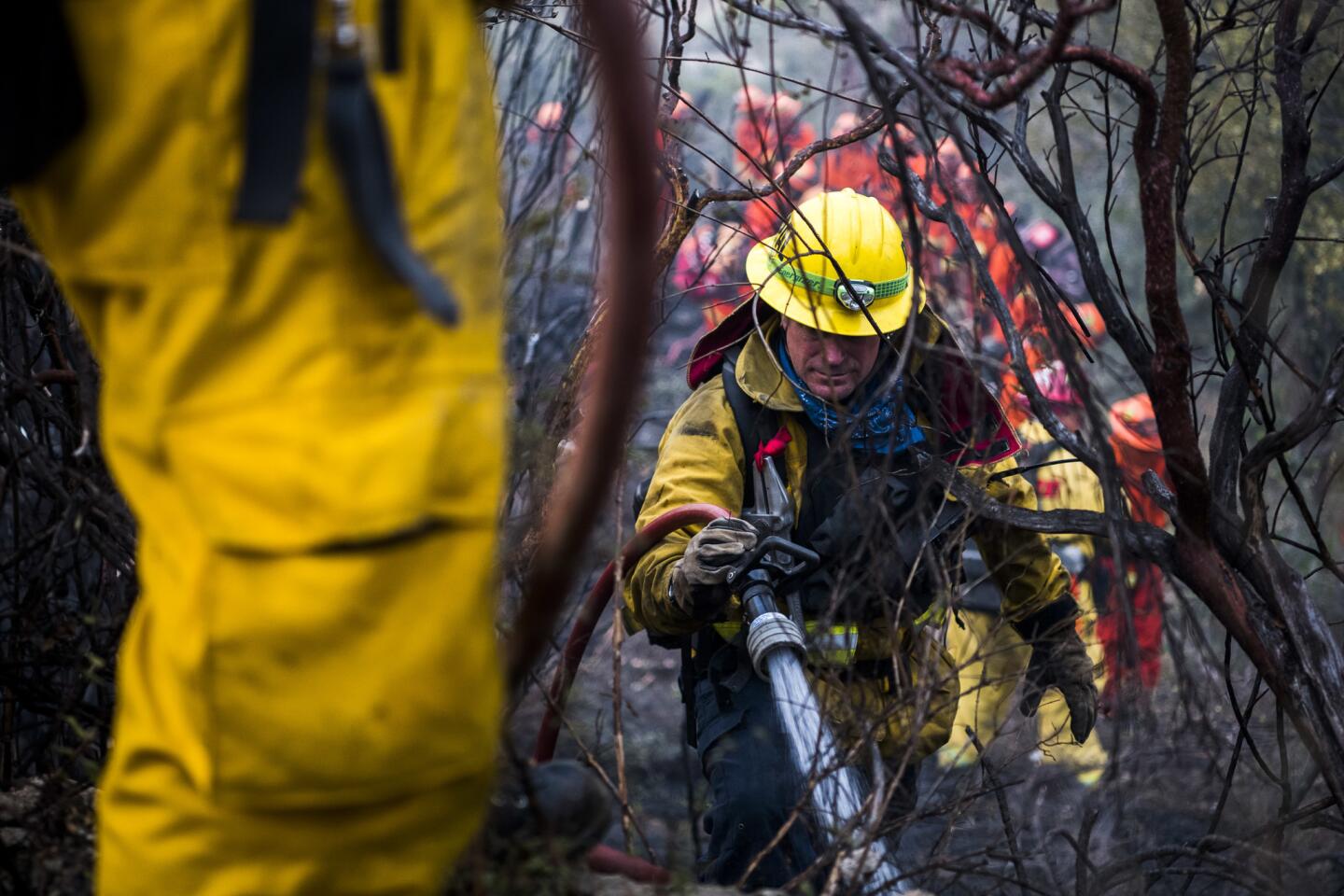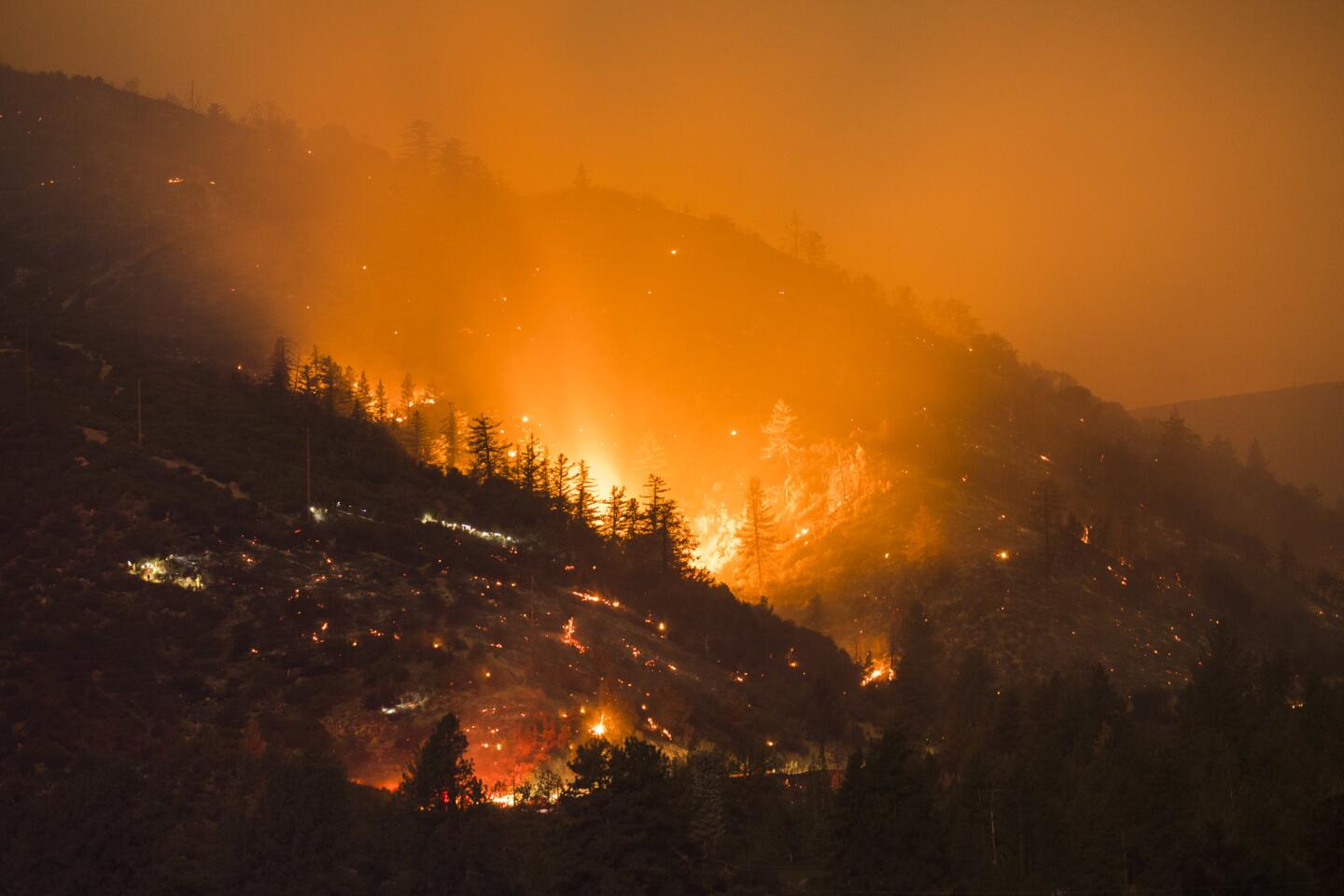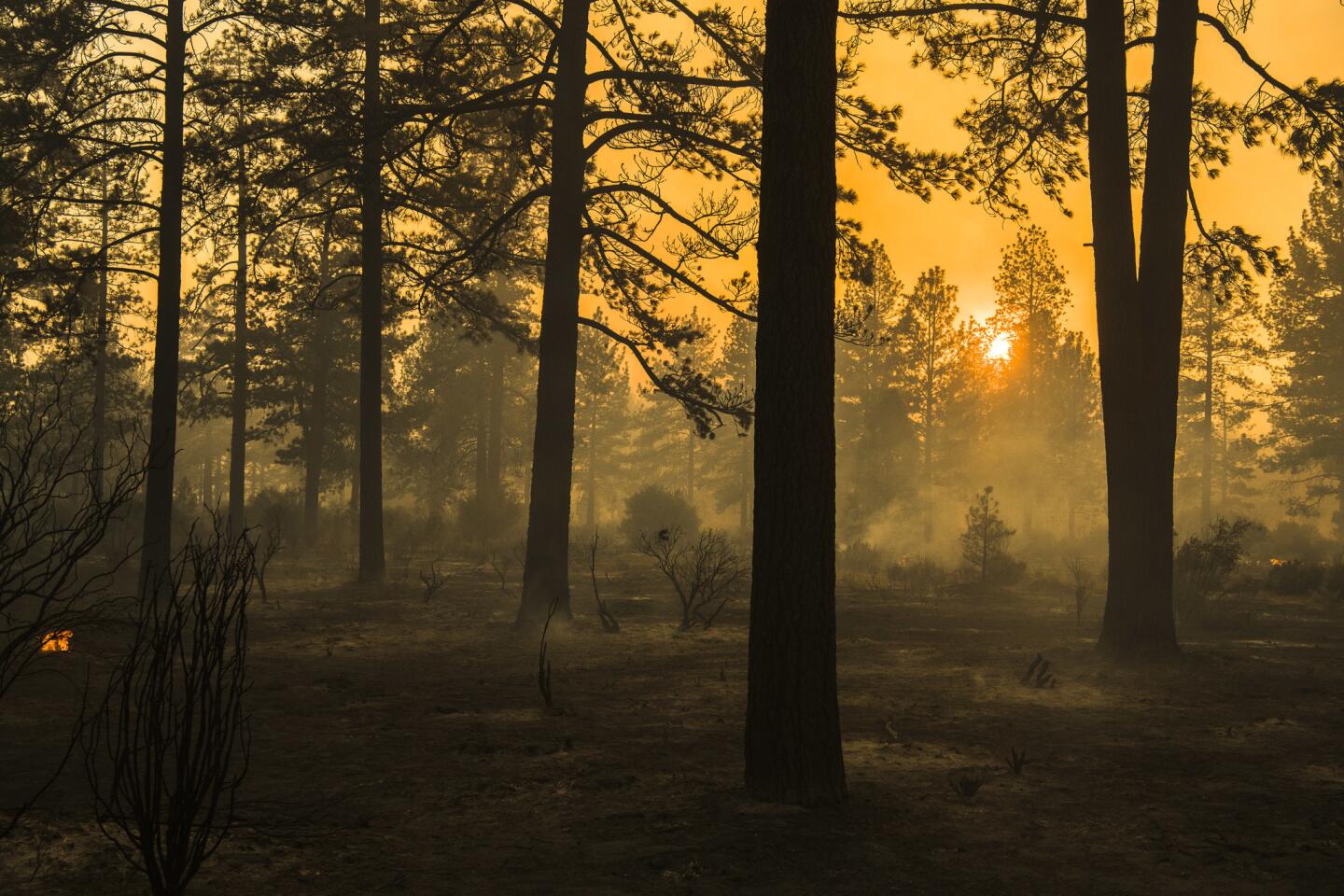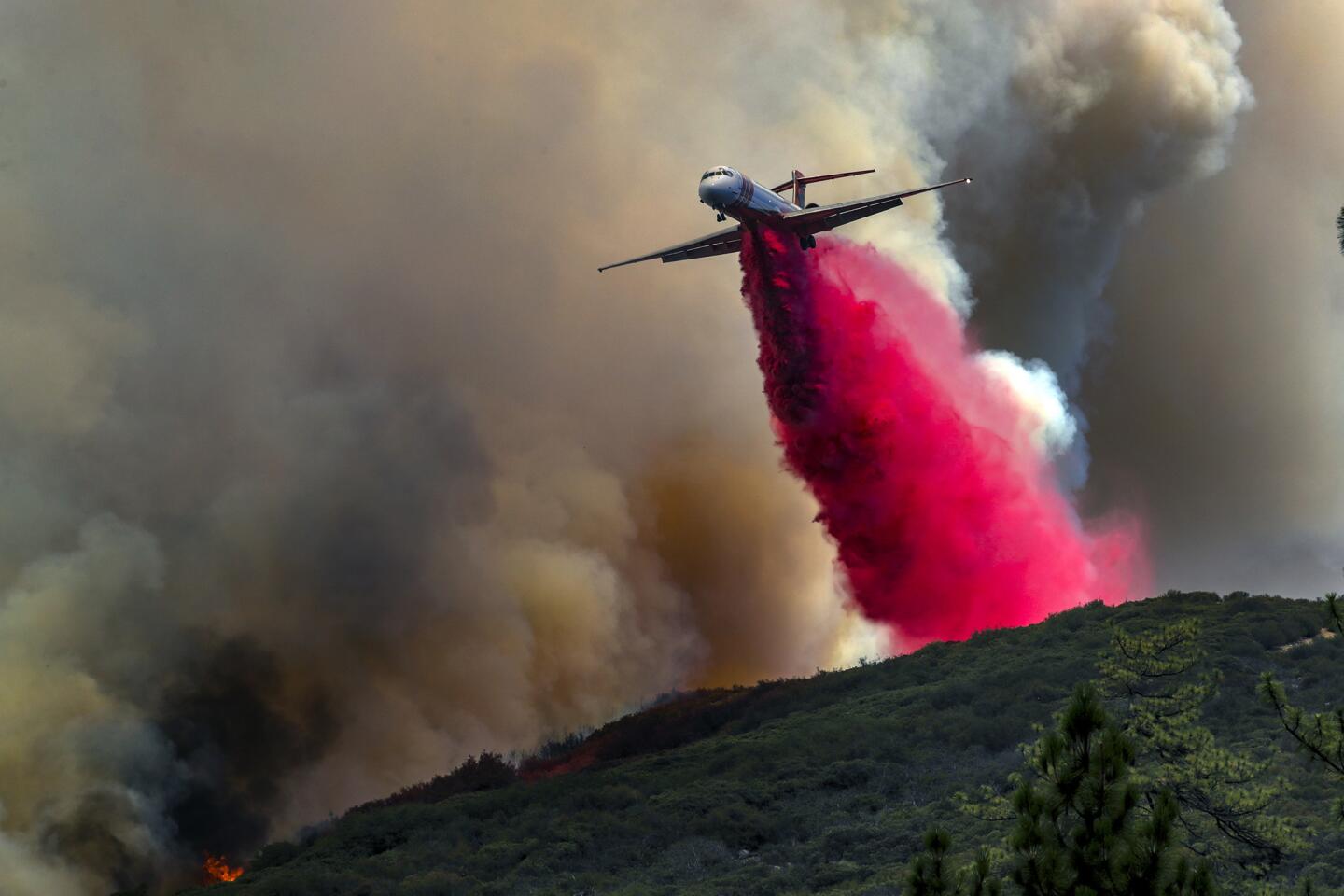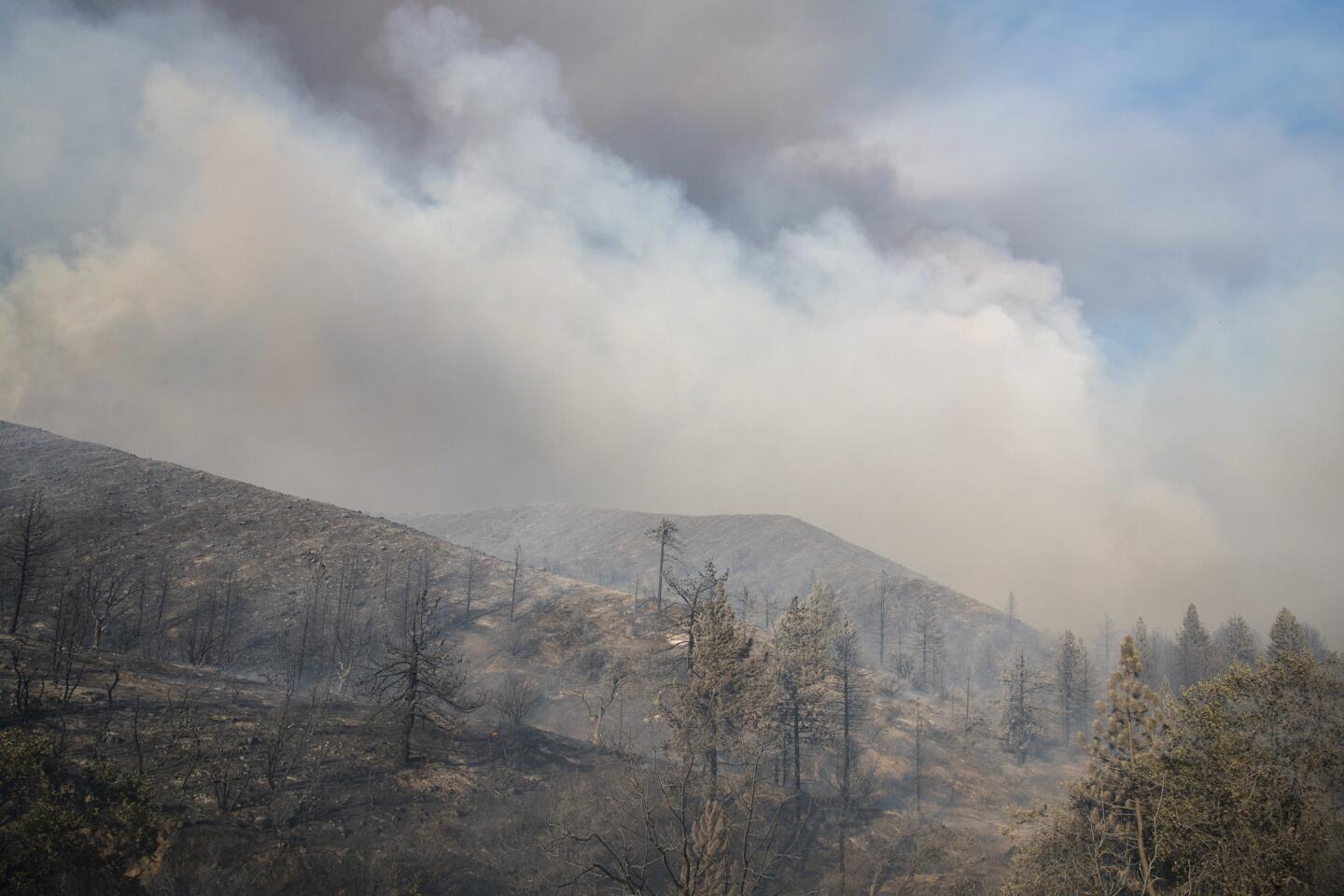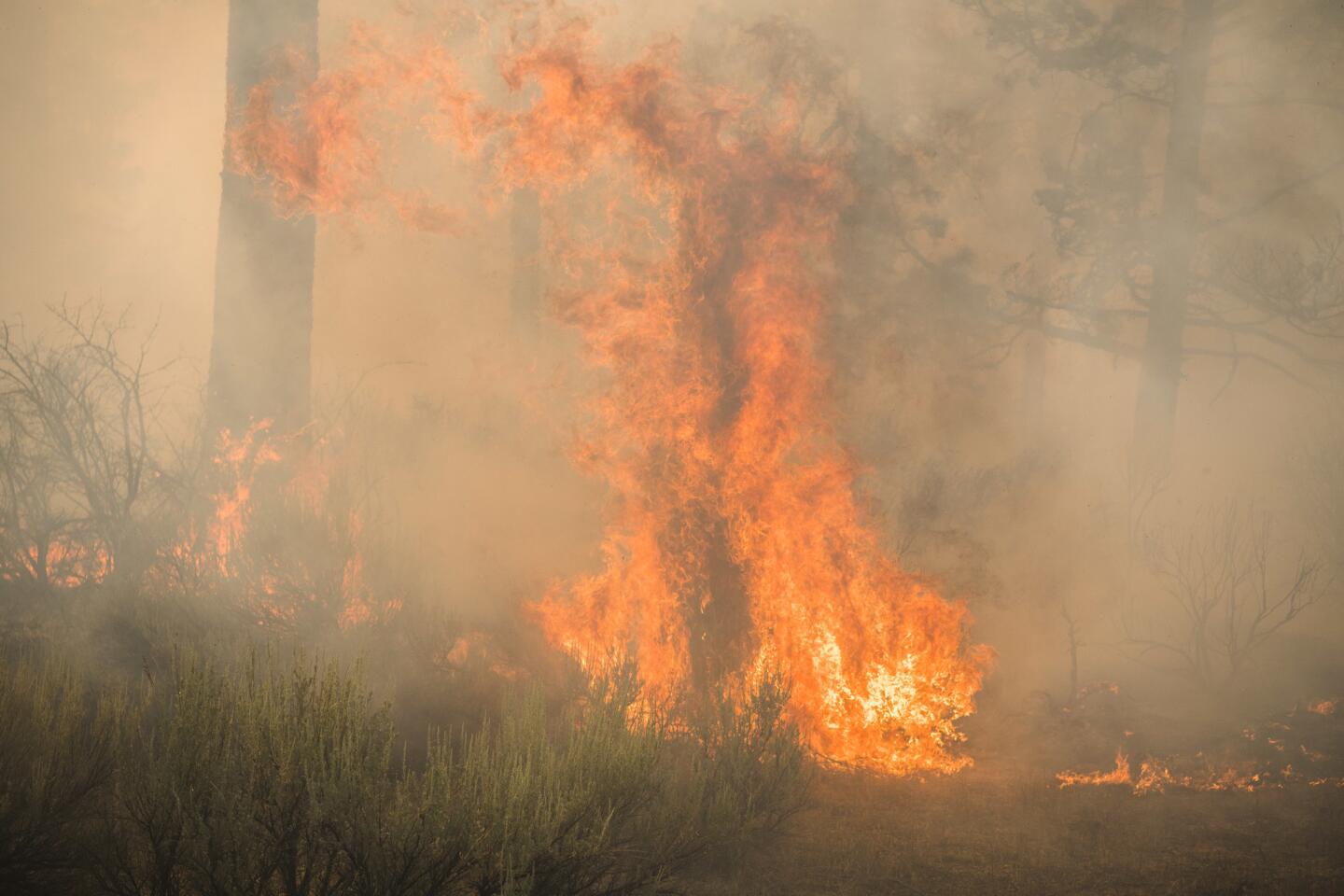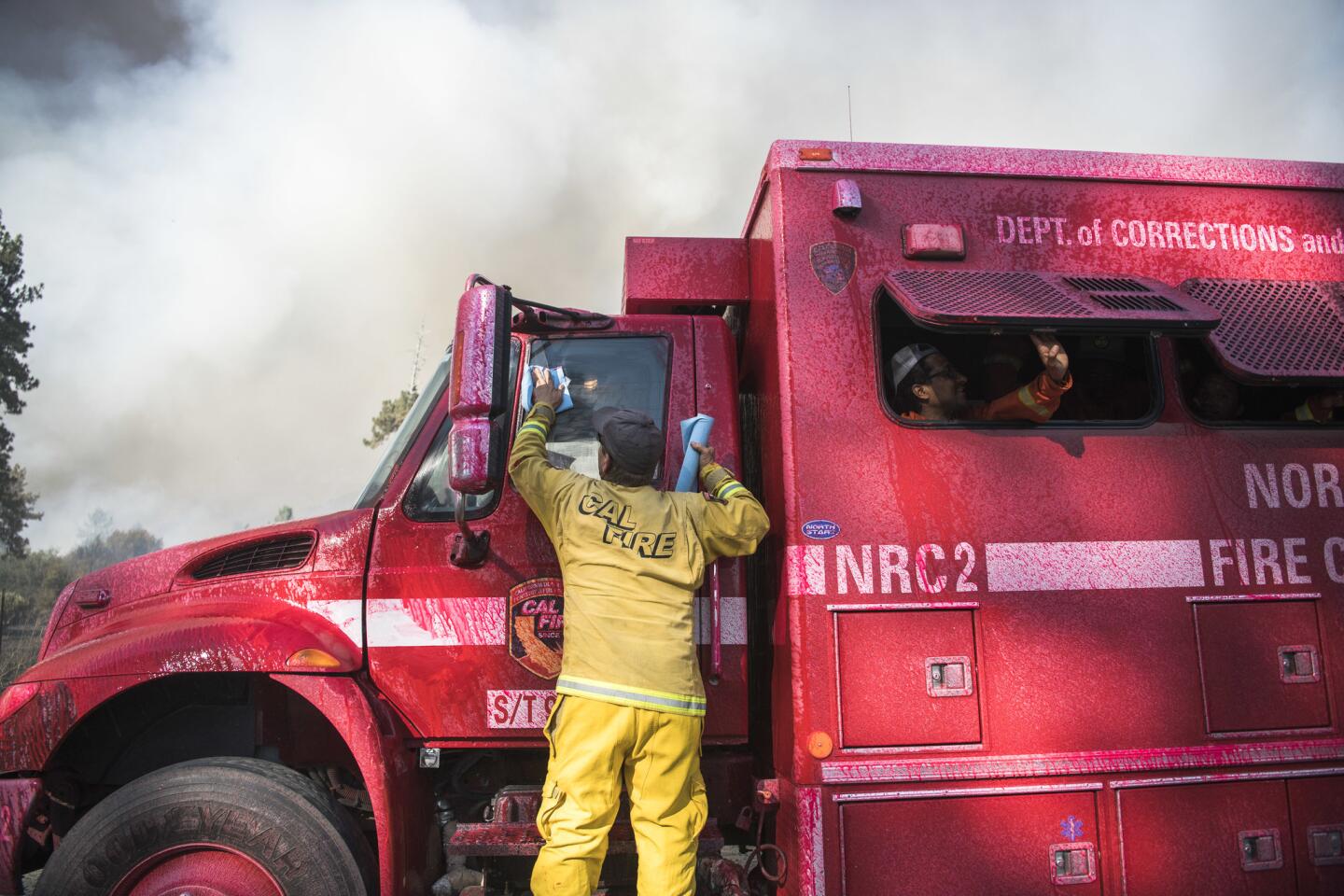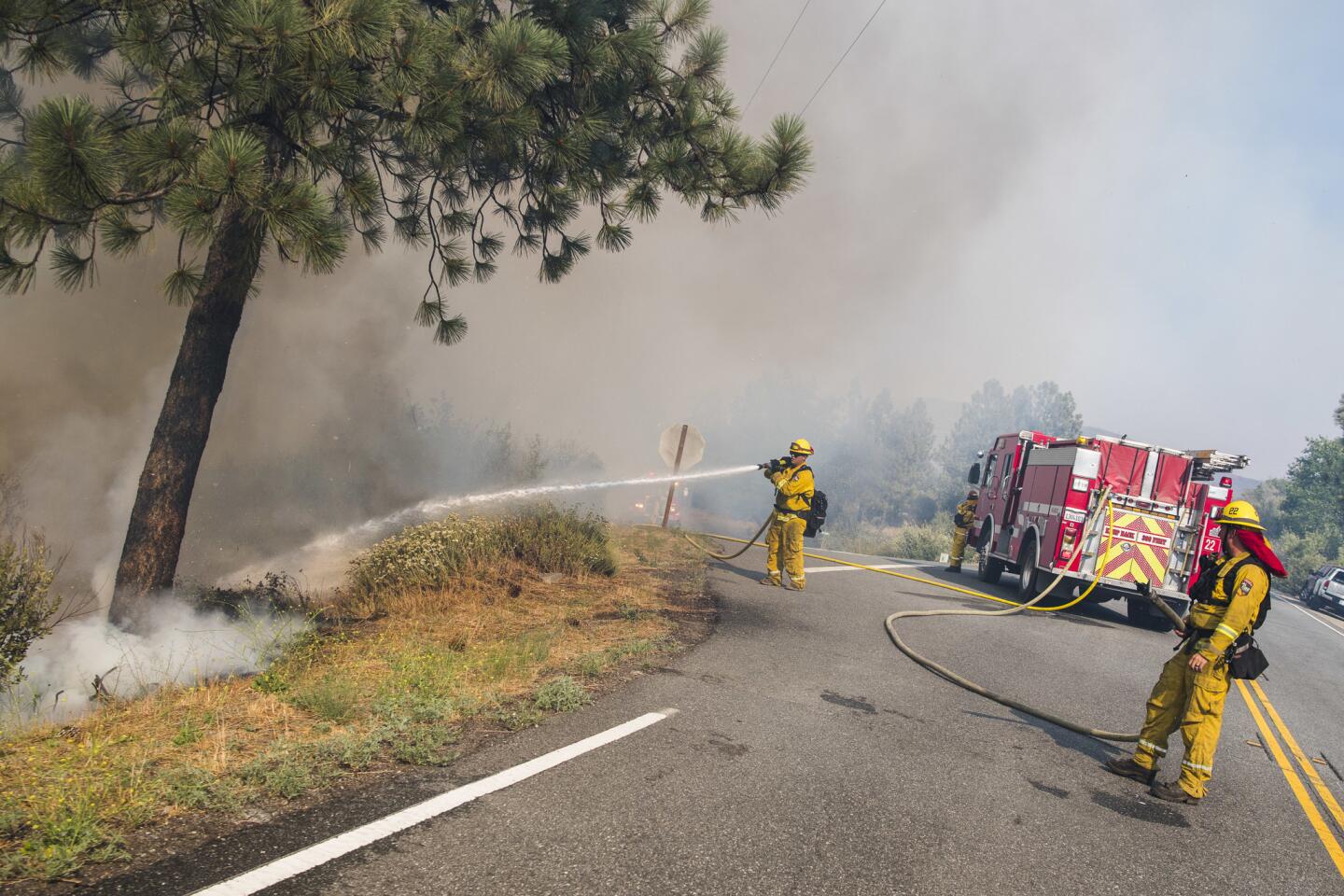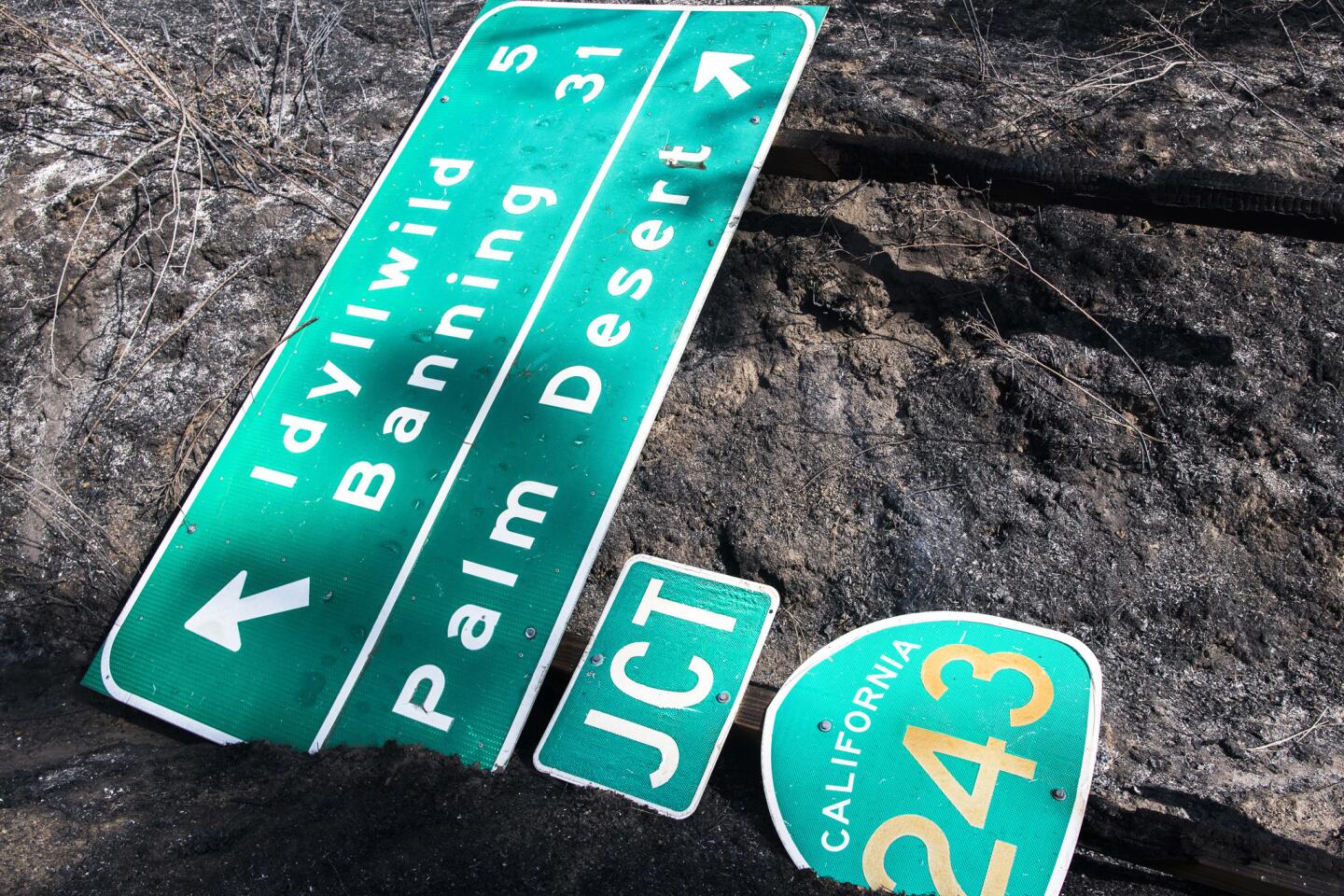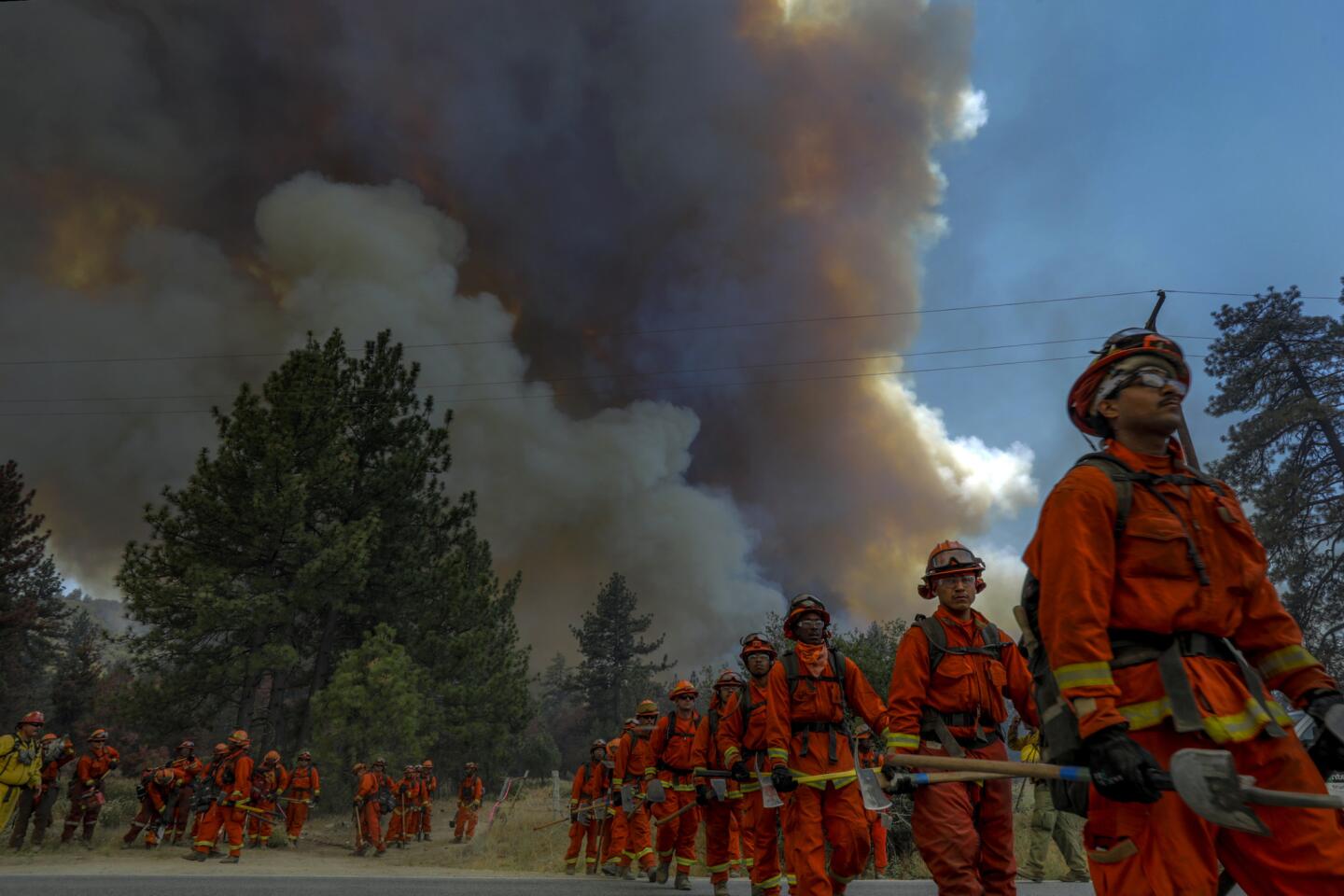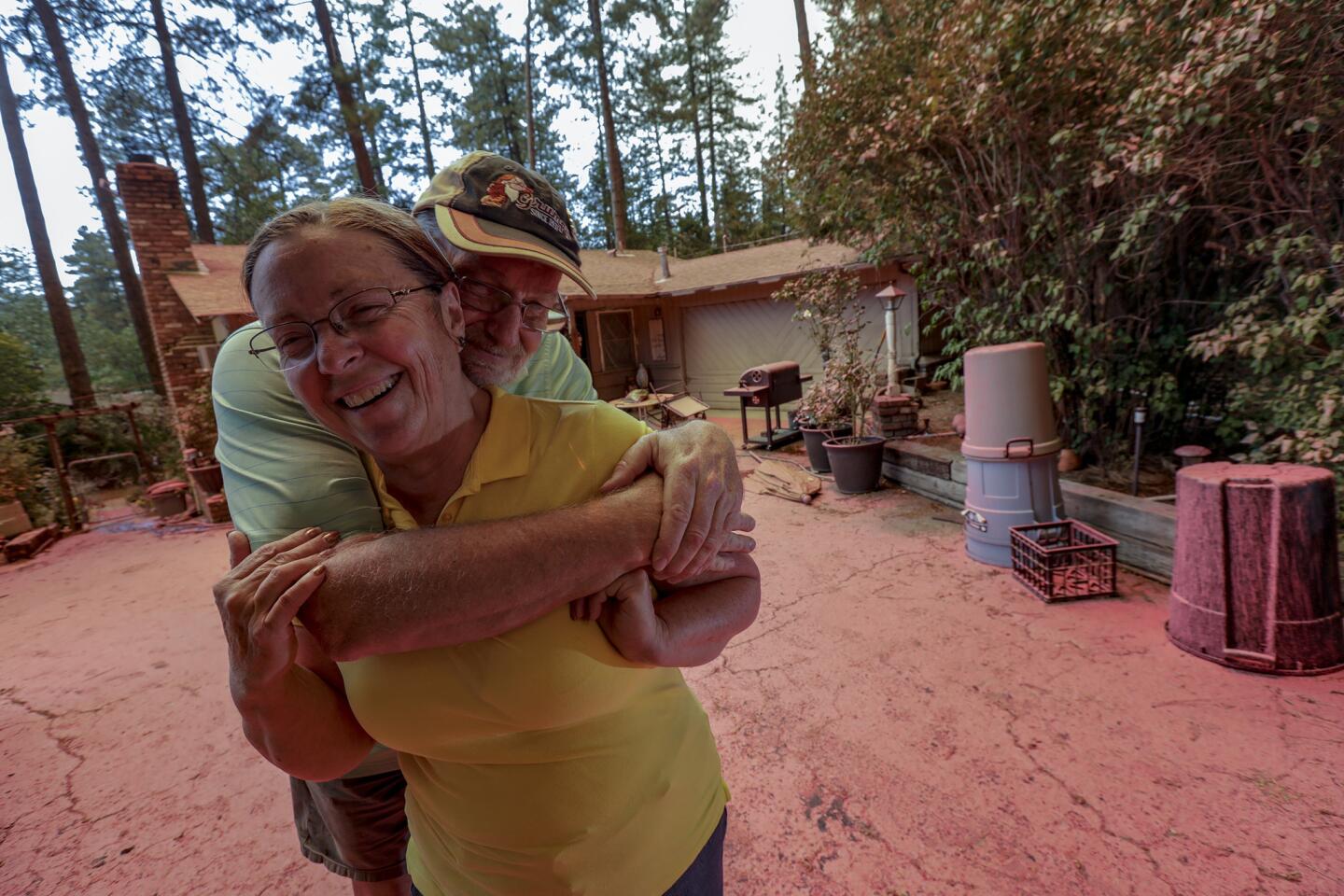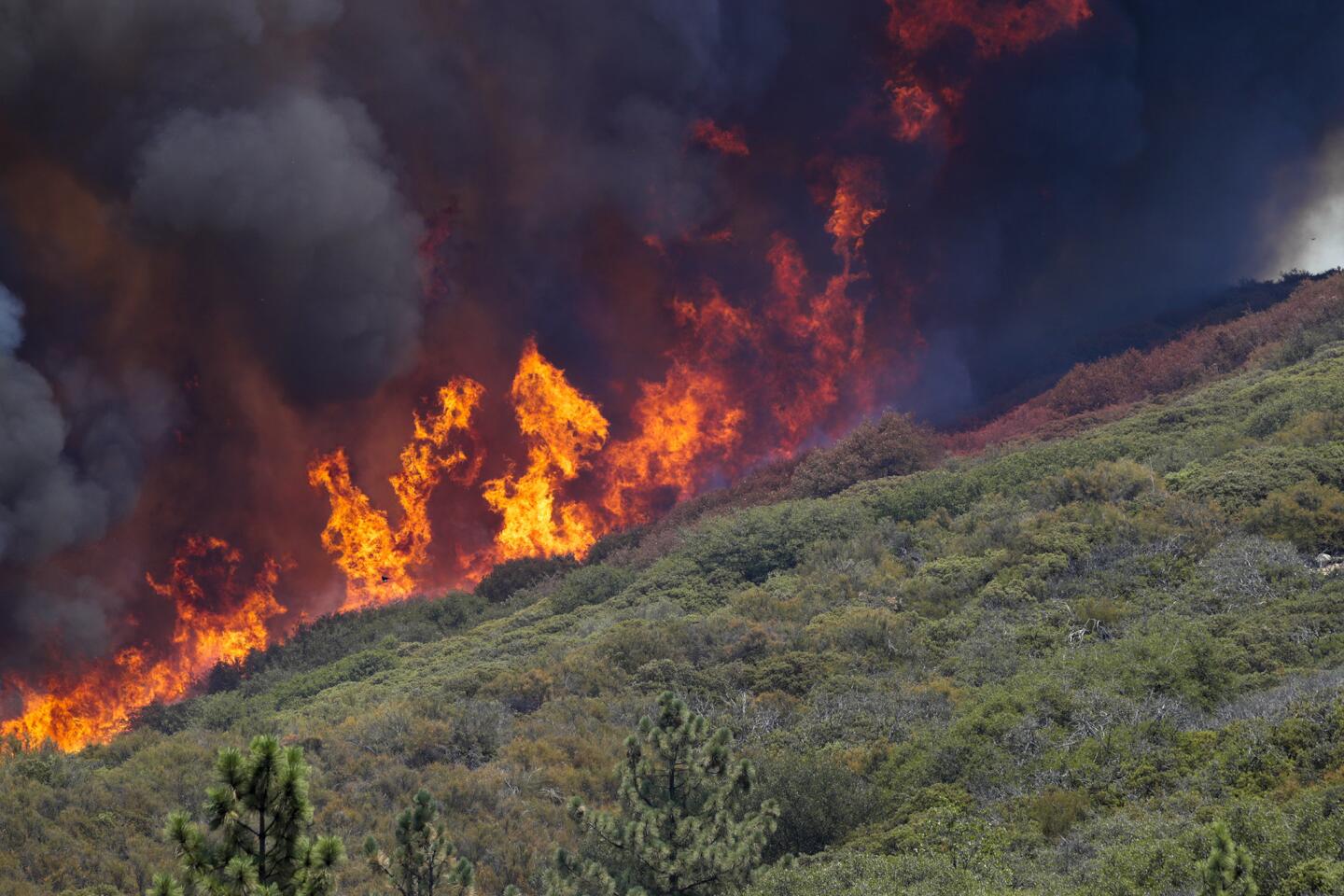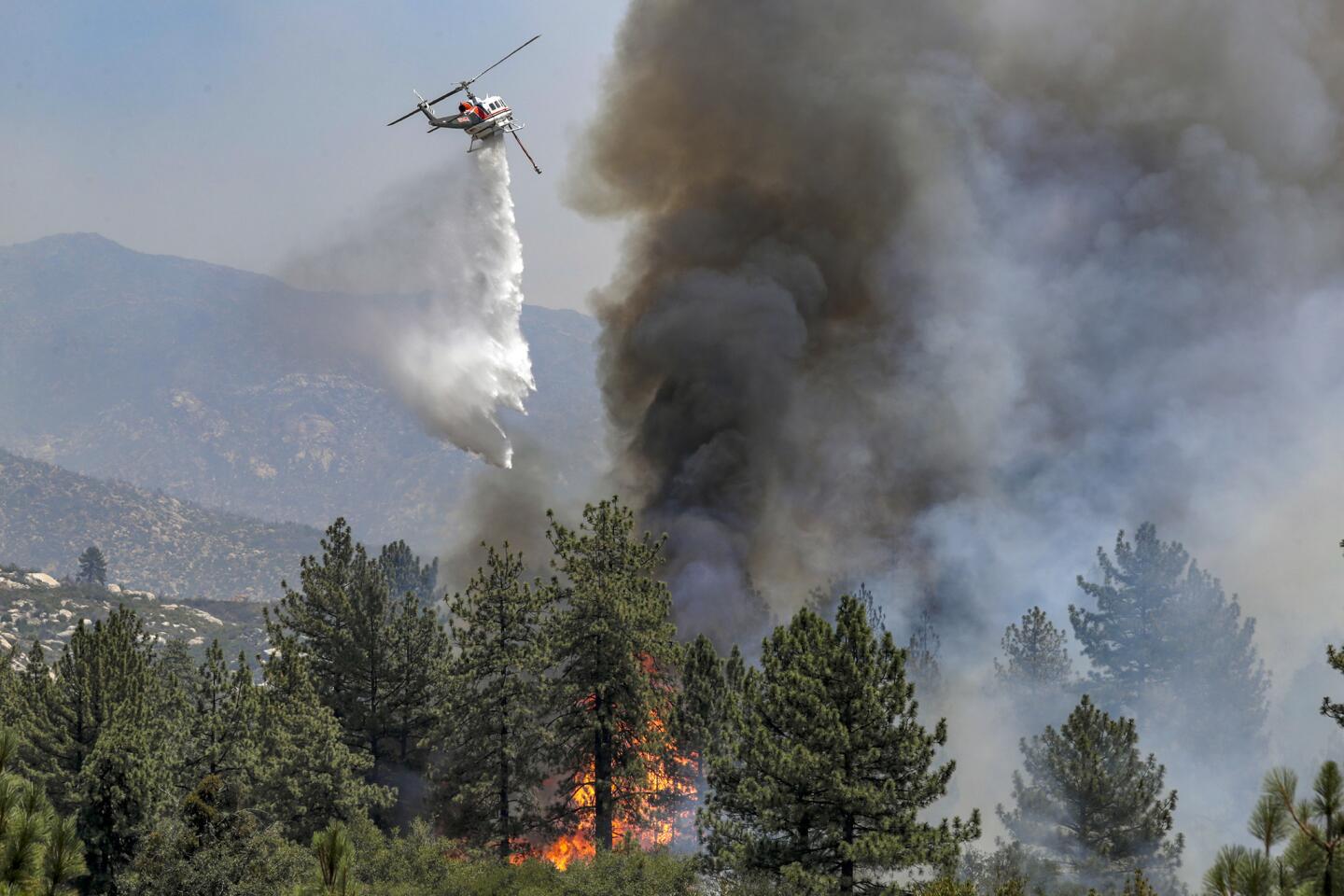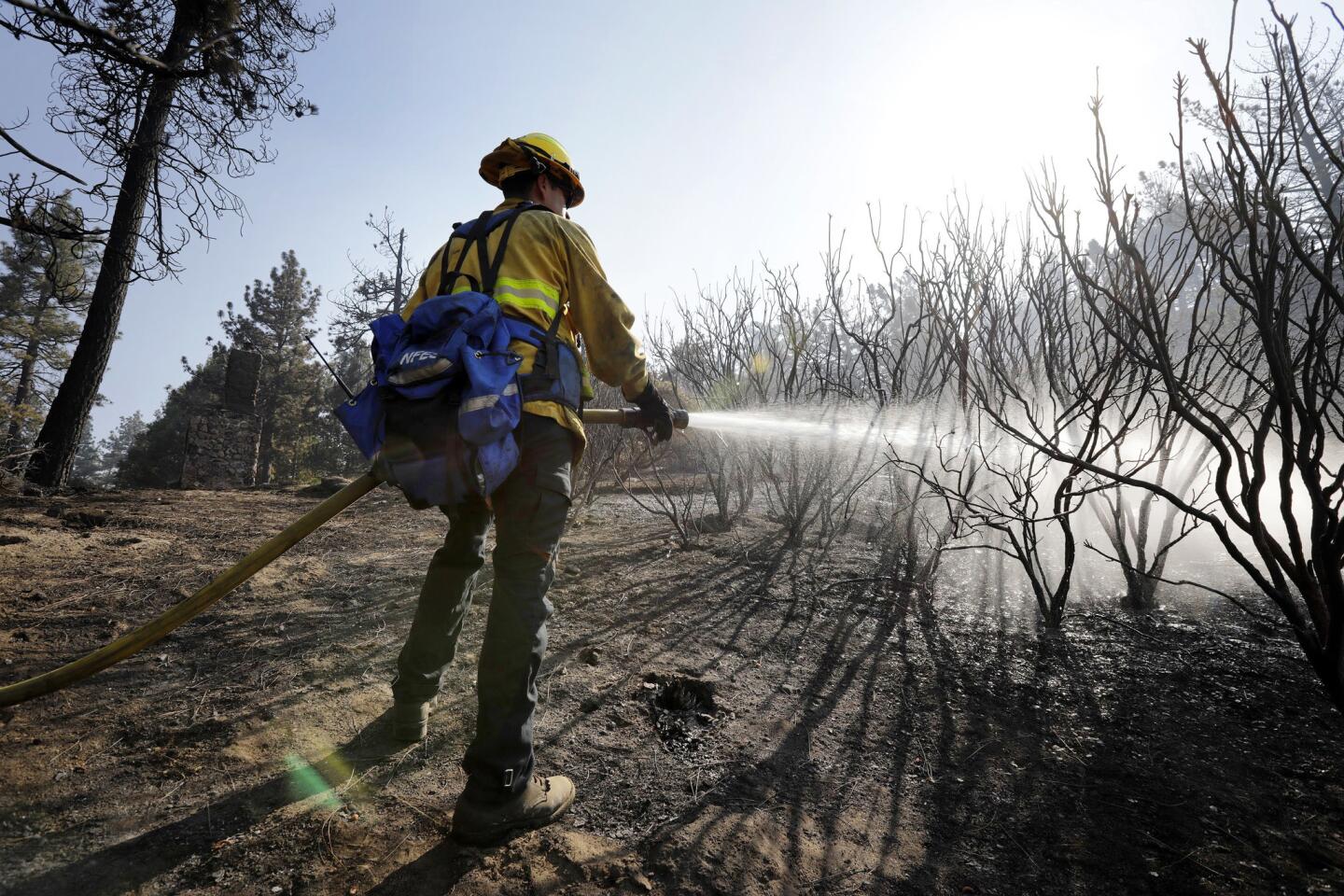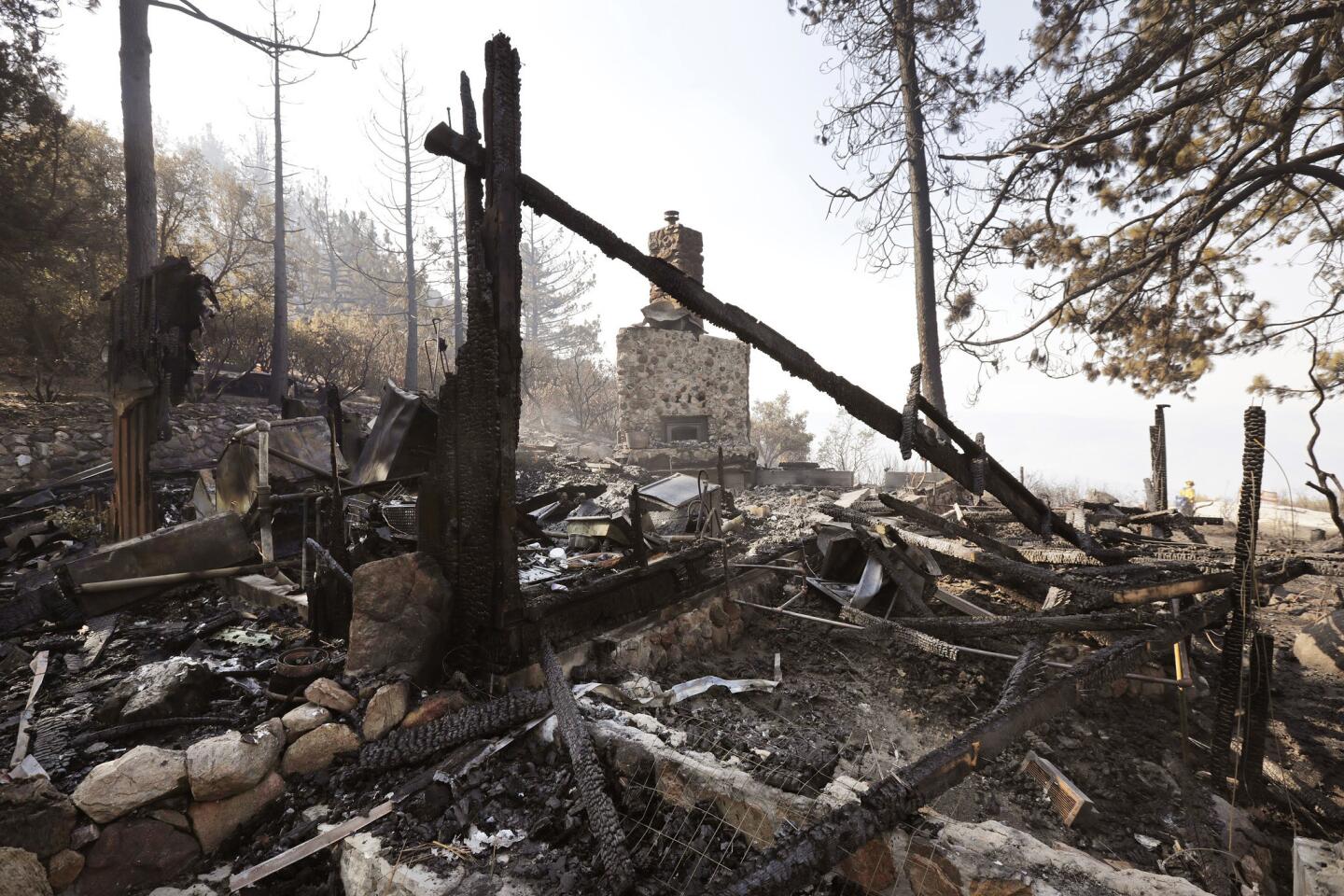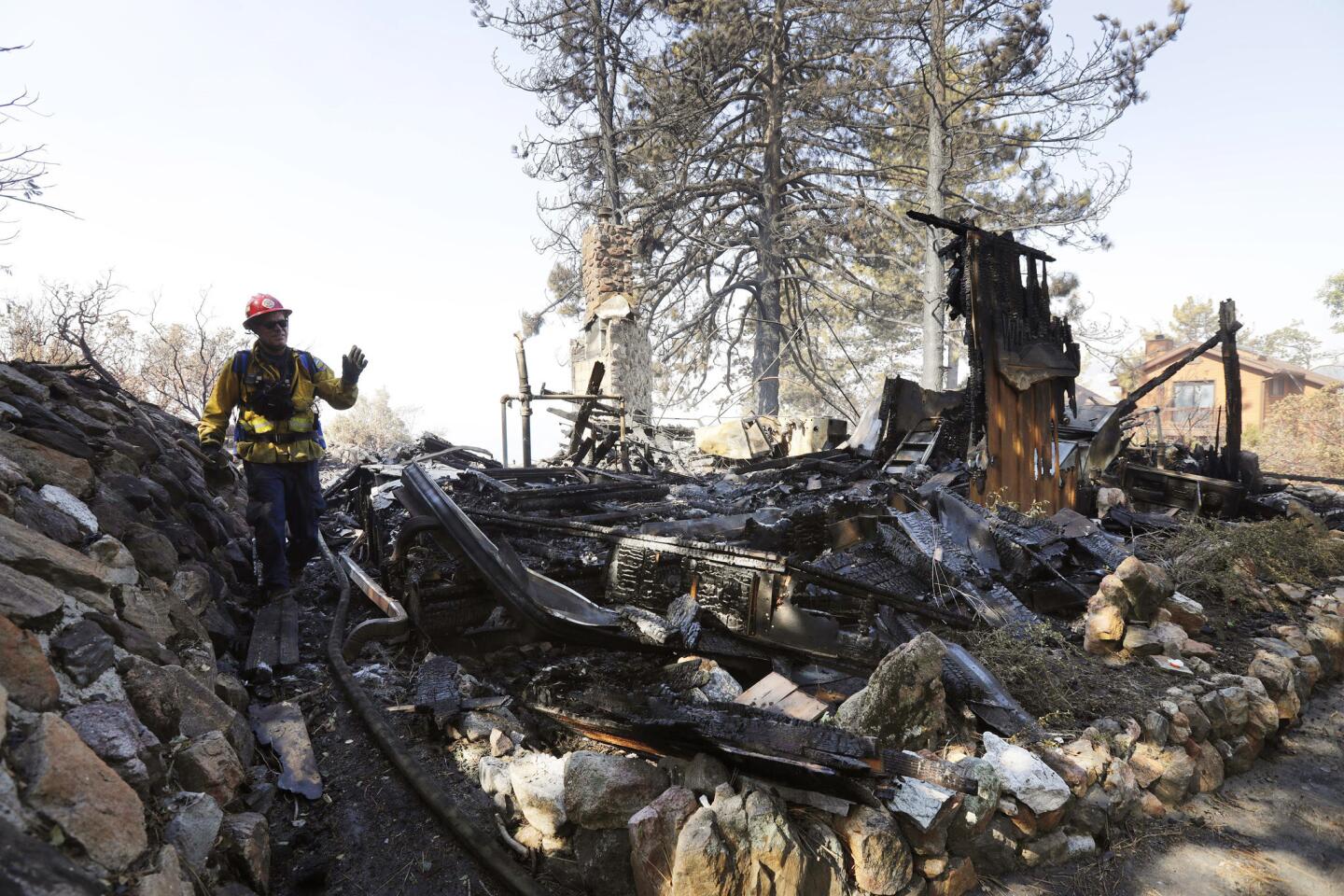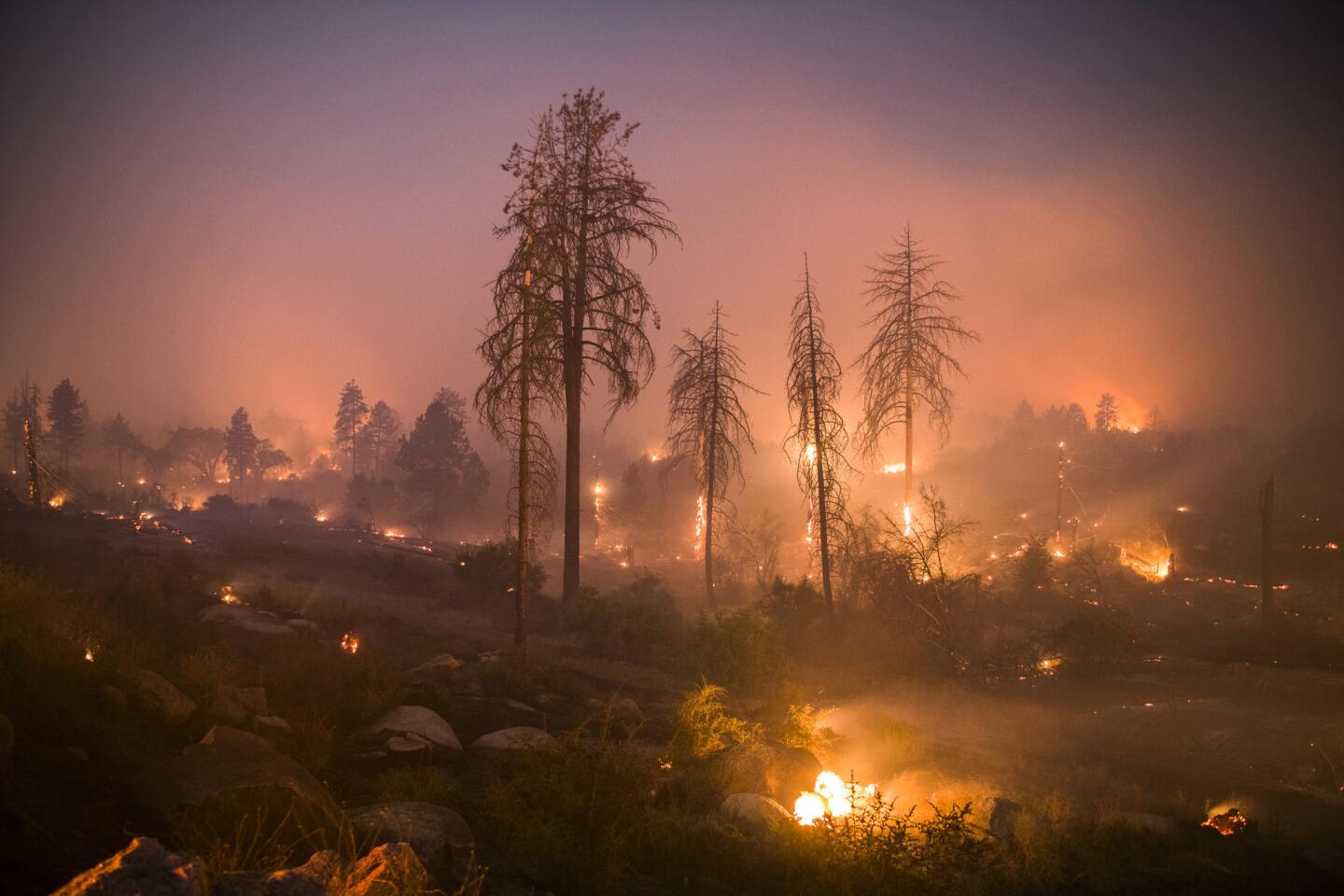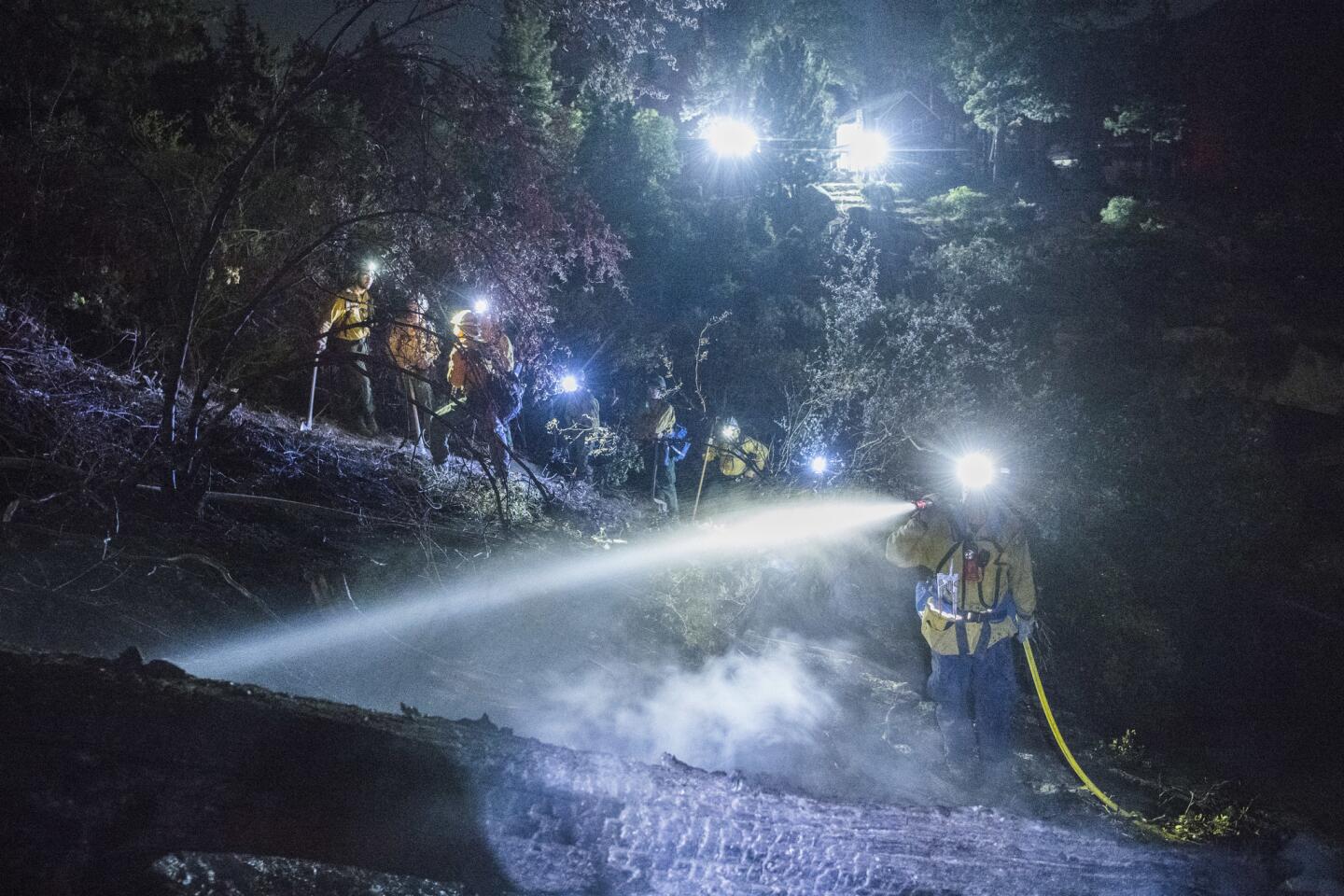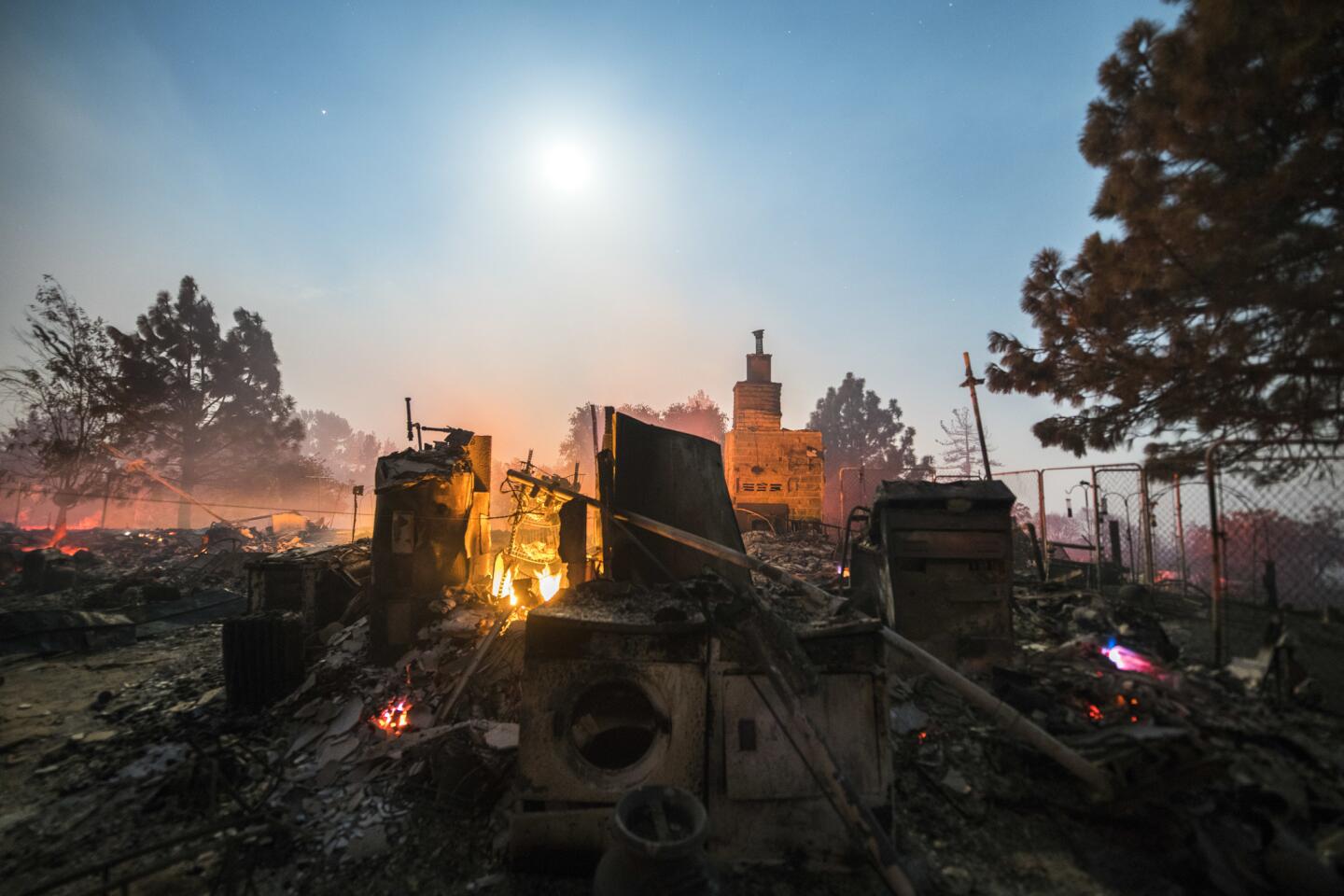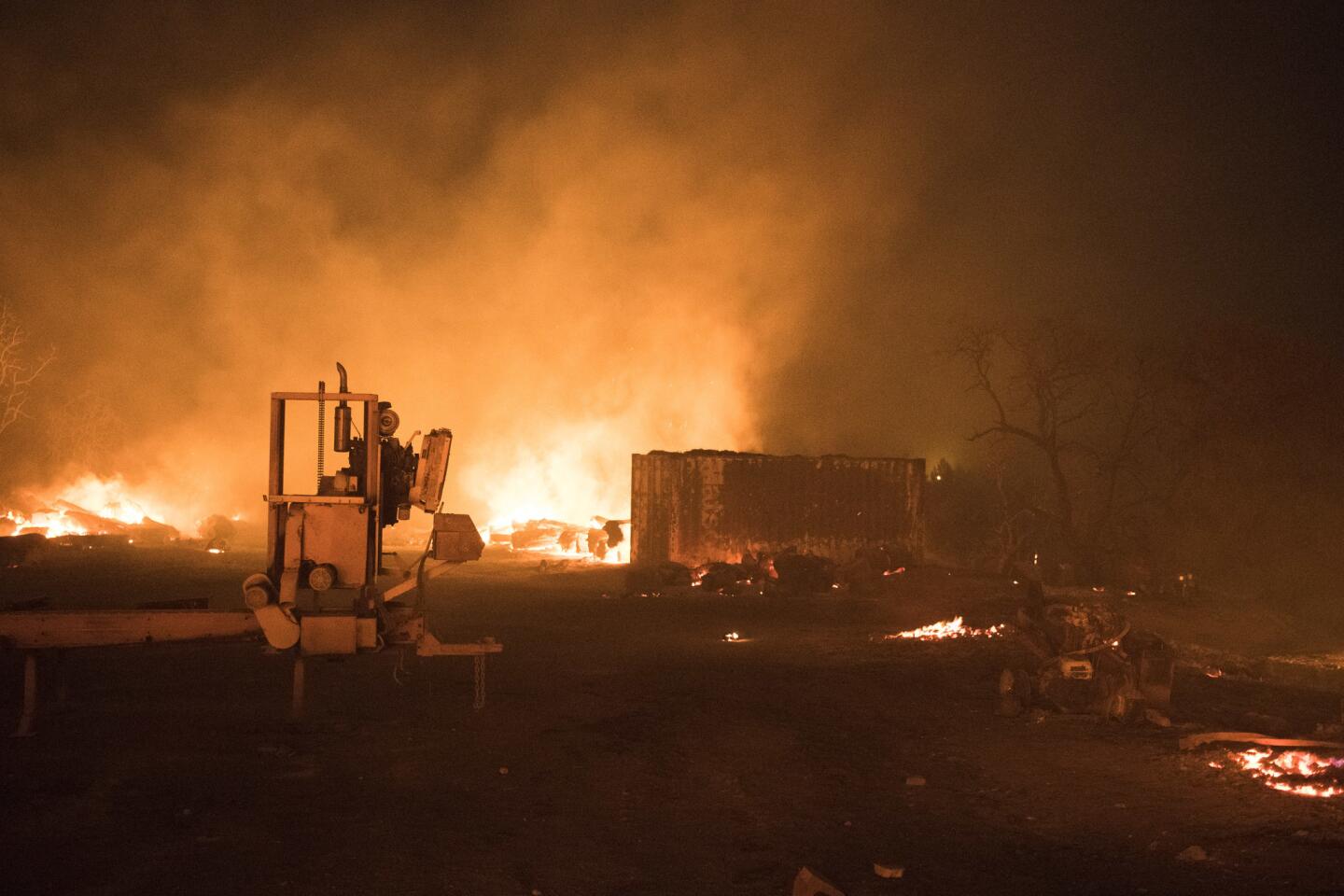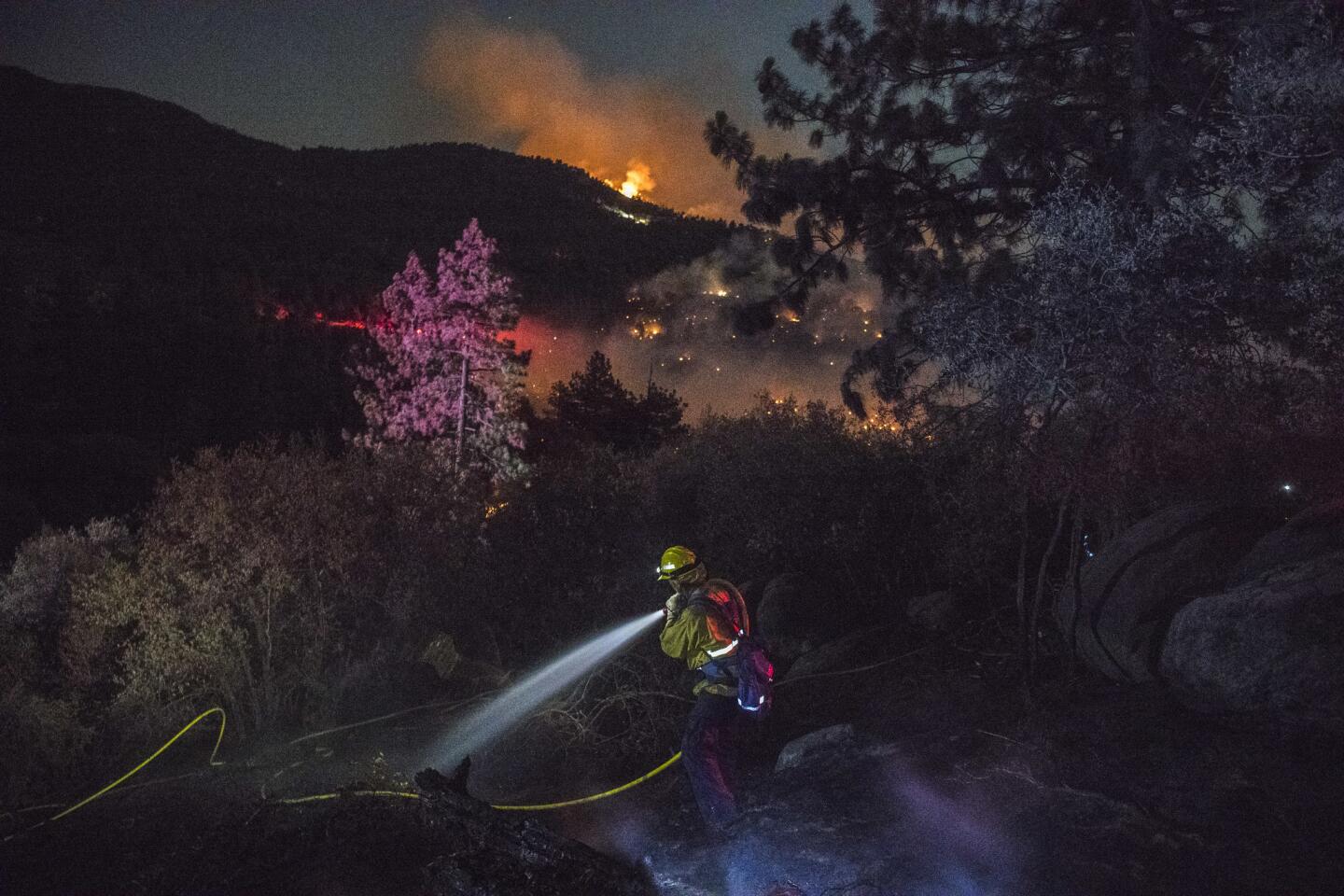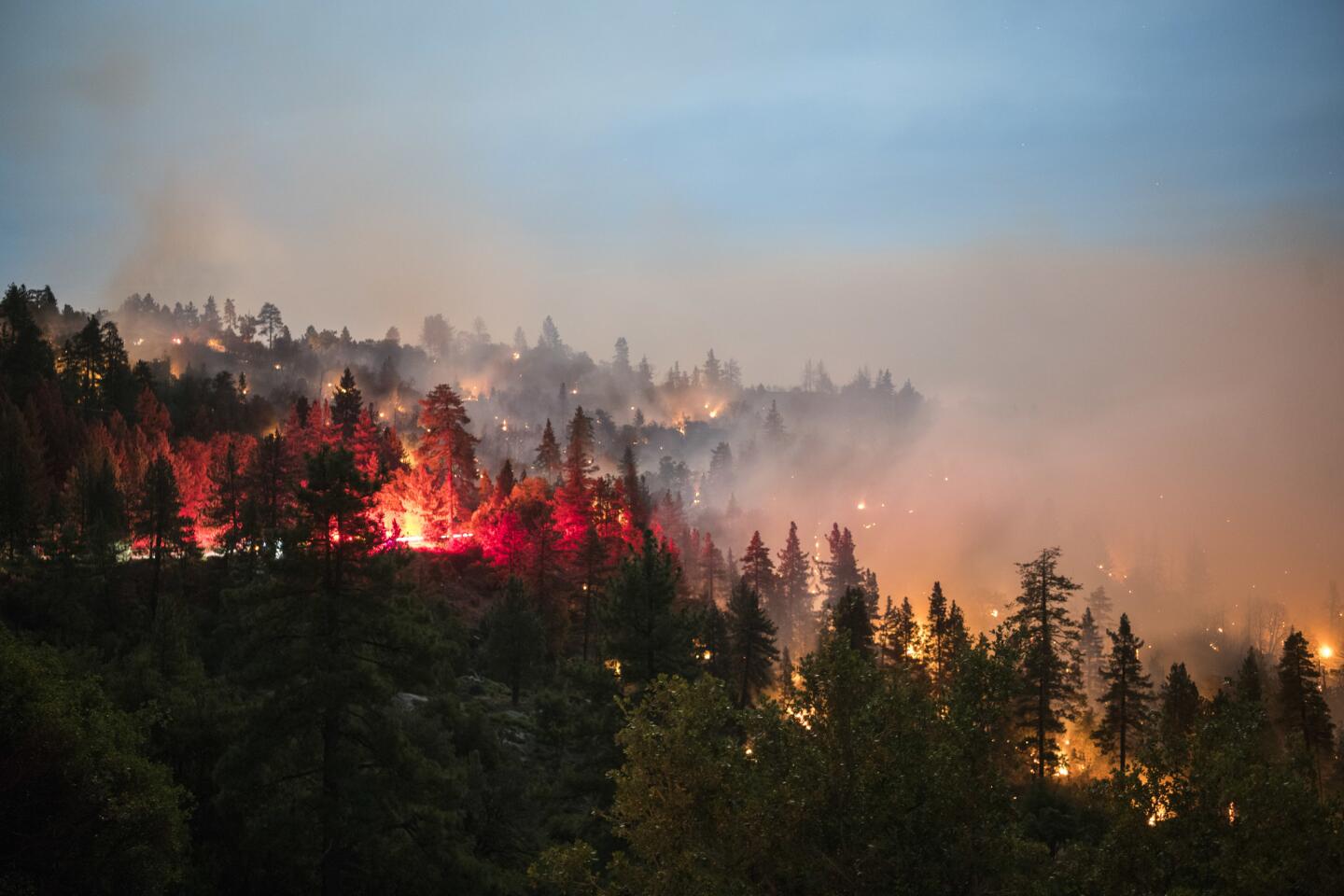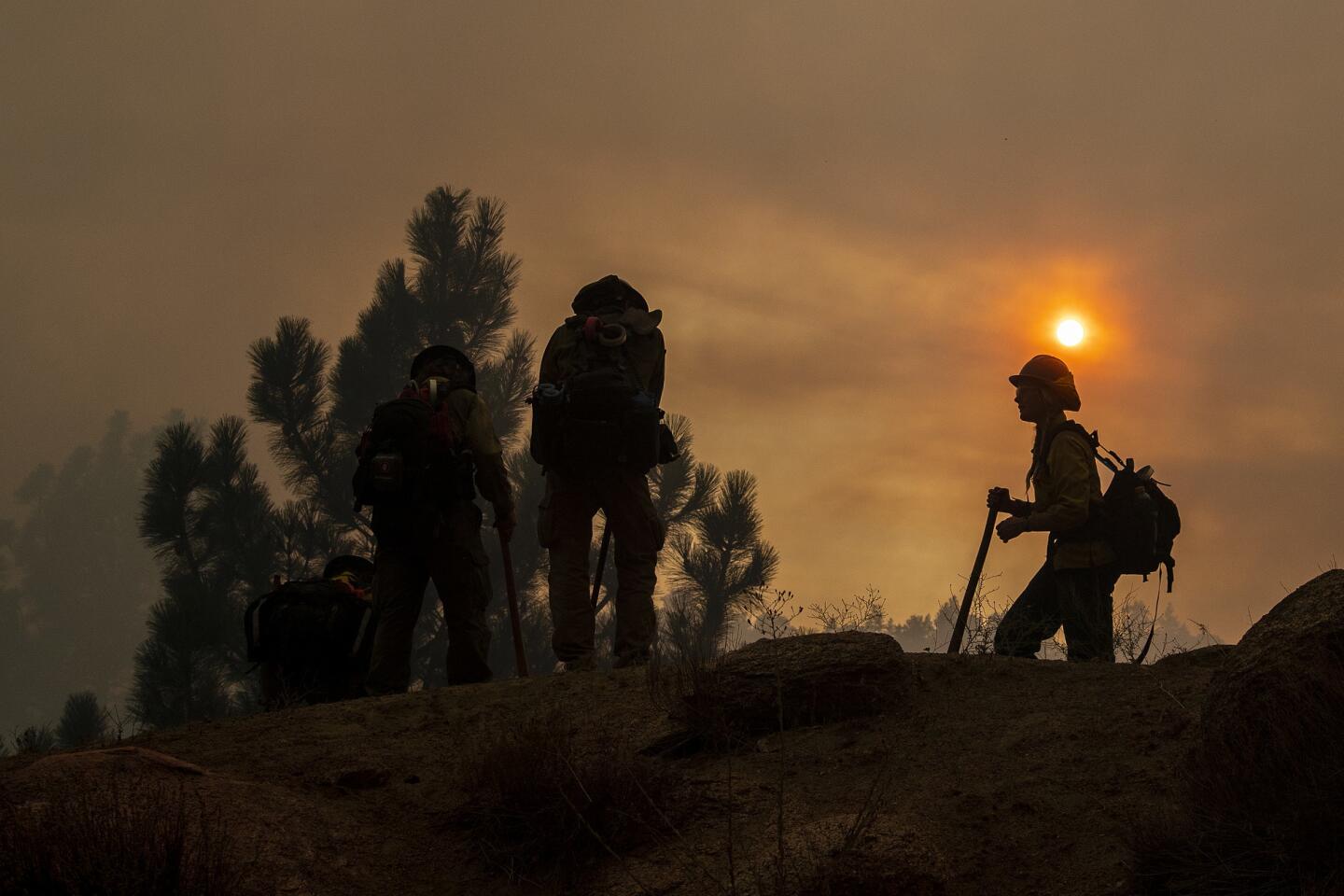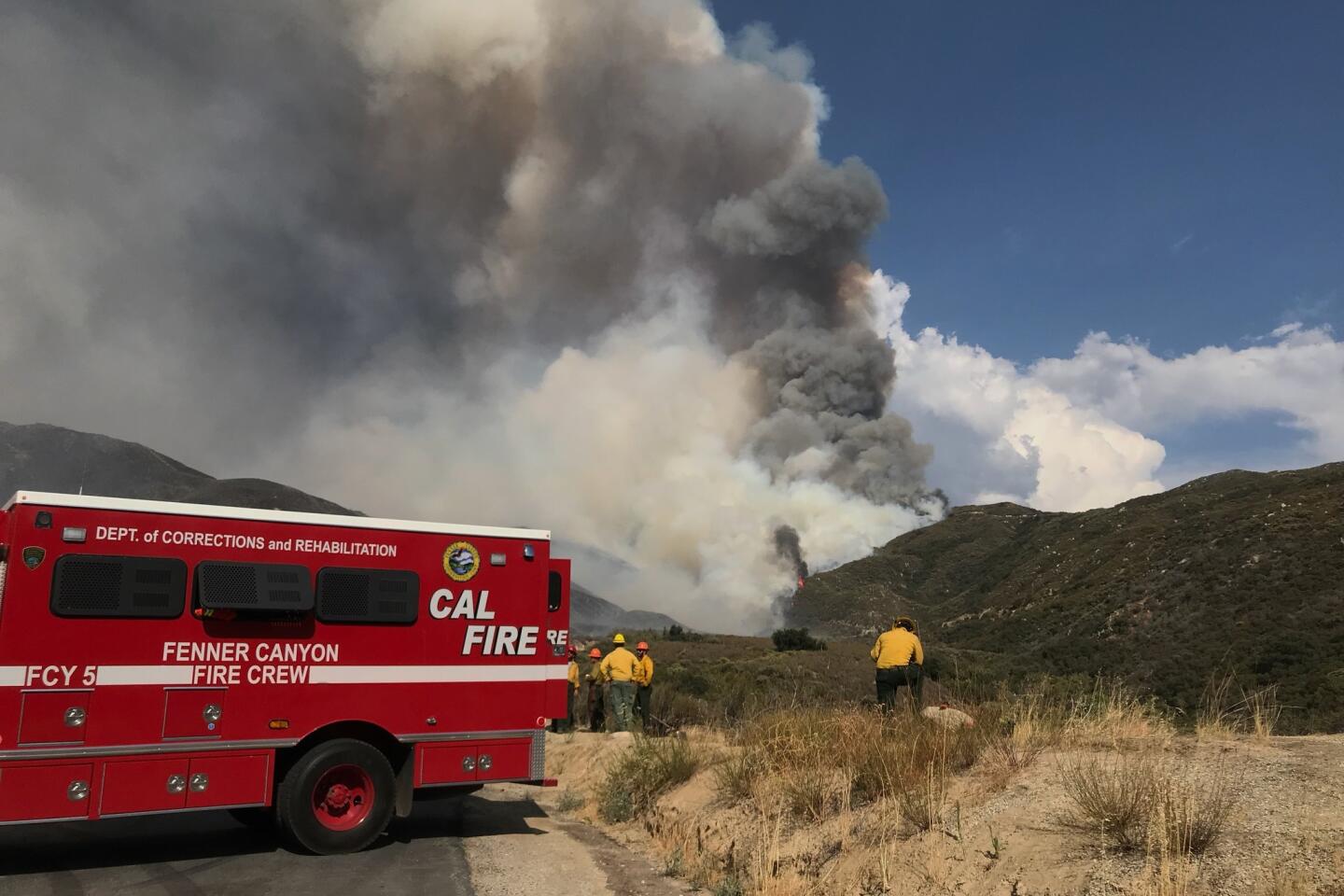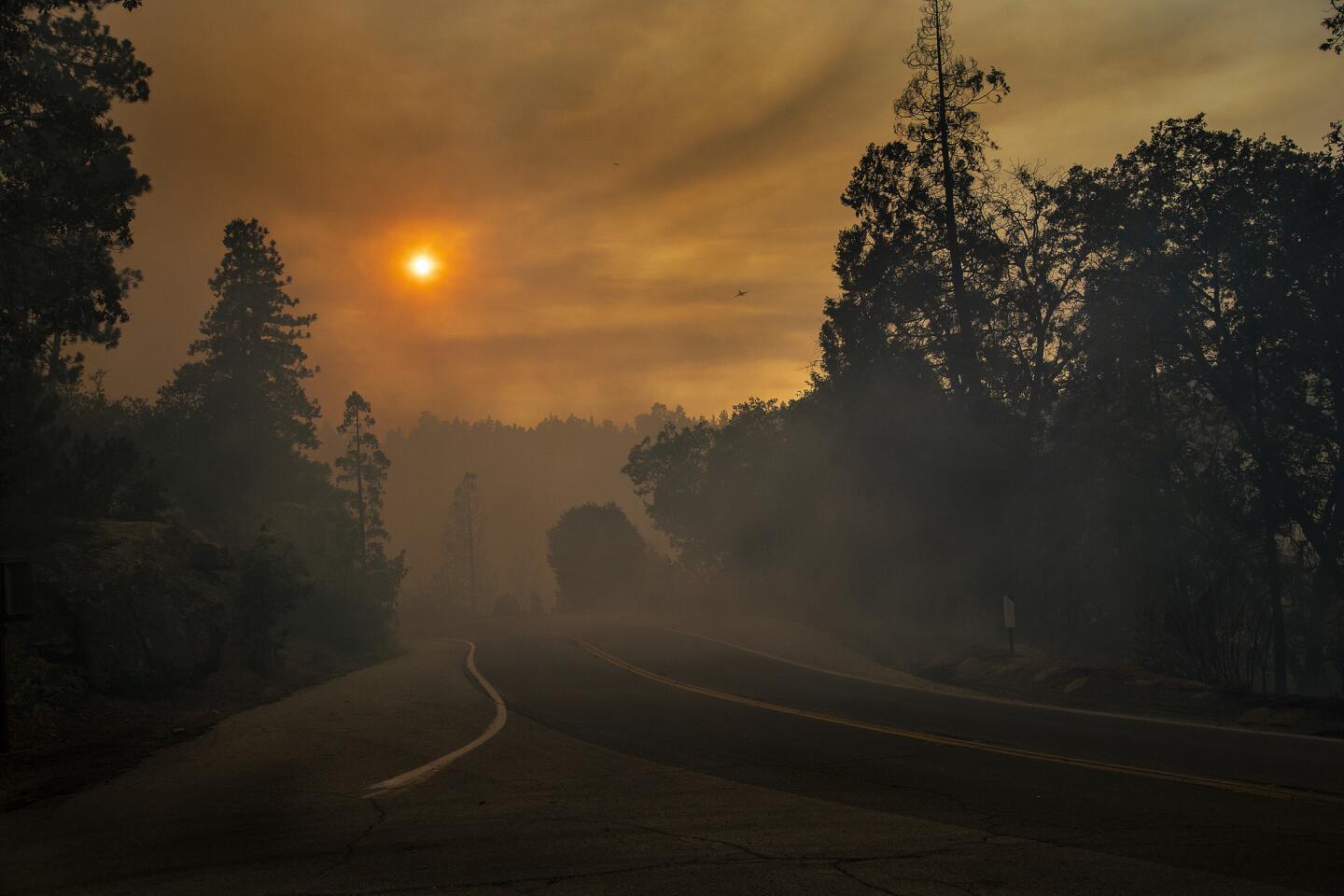Man charged with starting 11,500-acre Cranston fire, eight others; Idyllwild authorities optimistic about blaze’s containment
- Share via
Riverside County prosecutors announced Friday that they have charged a 32-year-old man with starting nine separate fires, including a wildfire that has burned more than 11,500 acres in Idyllwild and forced the evacuation of thousands of residents as it rages through the San Jacinto Mountains.
Brandon N. McGlover was charged with 15 felony counts connected to the fires, authorities said. He is charged with one count of aggravated arson, five counts of arson of an inhabited structure and nine counts of arson of forest or wildland. If convicted, he faces a sentence of up to life in prison. He’s being held on $1-million bail.
Prosecutors say McGlover started eight fires on July 25, two days before he allegedly ignited the Cranston blaze in Idyllwild. That fire has kept thousands of residents out of their homes for days as crews work to tame the flames.
“It’s the scariest feeling you can have because you’re helpless,” said resident Tamara Friemoth, 56, about the moment she watched the fire curl around the mountains in front of the gas station and auto shop she owns with her husband.
Friemoth has lived in the area for four decades and although she ran home to grab clothes and family heirlooms, she kept her business open for firefighters seeking drinks and snacks.
By Friday morning, the fire had scorched 11,500 acres and prompted the evacuation of more than 4,000 homes, authorities said. The fire is only 3% contained.
A dusting of crimson retardant atop a ridge marked where the flames had retreated from Idyllwild, an enclave of artists and musicians and a tourist draw.
The fire appeared to be spreading east of Mountain Center and into the San Jacinto Wilderness, as well as north of Lake Hemet.
The blaze is expected to keep growing through Friday, especially in the wilderness and the Rattlesnake Spring areas, according to Chad Cook, operations section chief with the California Incident Management Team.
“The fire is laying down now,” Riverside County Fire Chief Dan Talbot said during a morning briefing. But “it looked like that yesterday morning too, and then it roared back to life. Keep that in mind.”
Response teams are keeping a close eye on the communities of Apple Canyon and Vista Ranch, which are threatened by the spreading flames. Fire-control efforts have been hampered by the extreme heat and low humidity and the other fires around the state.
Although the mile-high community is not yet in the clear, advance planning by fire officials and local residents may have helped avoid a major disaster, said Patrick Reitz, chief of the Idyllwild Fire Protection District. Fire authorities have been warning for years about the buildup of tinder-dry trees and brush on all sides and the community took heed.
“Idyllwild was saved by years of preplanning,” Reitz said. “That includes removal of thousands of dead and dying trees, construction of miles of firebreaks and evacuation plans” drafted by at least a dozen mountain camps that cater to thousands of youths, several town organizations and fire authorities.
“Before we pulled the cord on a formal mandatory evacuation shortly after the Cranston fire began around noon Friday, most of the youth camp folks were already off the mountain,” he said.
Following close behind were an estimated 6,000 residents who found themselves on traffic-choked two-lane roads that hug the ragged northern slopes of the San Jacinto Mountains, where suburbia meets the wilderness.
The community’s disaster plan was based on a variety of fire scenarios that identified staging areas for firefighters and equipment and safety zones and escape routes for evacuees, officials said.
It wasn’t the first time this community, known for its art and music foundations and schools, has been shaken by fire.
The first time Idyllwild was evacuated was in July 1996, when the Bee fire crept up the mountain. Residents returned to their homes on the July 4 weekend and held a parade led by local firefighters.
A decade later, the arson-caused Esperanza fire triggered an explosion of heat and flames that killed four local firefighters and critically injured another. Relatives and neighbors in Idyllwild responded to their loss with strong emotions, flags at half-staff and an army of volunteers to help the affected families.
The town was evacuated again in 2013, when it was attacked by the Mountain fire.
Friday morning, authorities were cautiously optimistic that the Cranston fire “had moved on, away from the community and into sparsely populated areas,” Reitz said. “The preparations we did with the U.S. Forest Service, the California Department of Forestry and Fire Protection, Riverside County and others enabled us to get defensive lines in place ahead of this fire.”
He worried, however, about the safety of stragglers who defied the evacuation order to leave the tourism-driven community’s tightly packed cottages, modest chalets, gift shops, restaurants and watering holes.
“We cut the power in Idyllwild due to the approaching fire,” Reitz said. “A few hours later, the main power lines into town were downed by the blaze. So the whole community is without power, and we’re working off generators.”
Fire authorities battling to save Idyllwild expressed guarded optimism Friday afternoon that the alpine resort had been spared three days after it was forced to evacuate.
“In the next day or two we should have full containment of this fire in the community of Idyllwild,” Lee Beyer, a spokesman for the San Bernardino National Forest, said. “But we still have a ton of work to do before it’s safe enough for residents and visitors can return safely.”
“Firefighters are doing heavy mop-up operations in hot spots,” he said. Power poles and power lines need to be replaced. Highway guardrails are in need of repair.”
As he spoke, helicopters and air tankers doused flames on fire lines a few miles north of Lake Hemet, and about 15 miles south of Idyllwild much of the black smoke that had filled the air a day earlier had turned to more benign shades of gray.
“Idyllwild and all its charms will still be there when the evacuation is lifted,” he said. “But the views along Highway 74 will be different because a lot of the green is gone.”
Fires also have struck Northern California, where firefighters have worked in 110-degree heat on the northern edge of the Sacramento Valley. Crews scrambled when a shift in the winds pushed the Carr fire three miles east in four hours, catching residents in Whiskeytown on their heels.
The blaze reached the edge of Whiskeytown Lake, where local news outlets reported that 40 boats were burned along with a number of homes.
Authorities placed 192 homes under mandatory evacuation orders, most of those in Whiskeytown and the community of French Gulch, according to Cal Fire. Authorities later expanded evacuations to parts of Redding. On Friday morning, authorities said 65 homes had been destroyed, 55 were damaged and hundreds more were threatened.
The blaze was 44,450 acres and 3% contained Friday morning. But most of that containment was on the fire’s west and northwestern edge, not on its southern face where the residents are, said spokesman Chad Carroll. The blaze has been running along the north side of Highway 299 since a vehicle malfunction sparked it Monday afternoon, he said.
While the Carr fire has been fueled by wind and topography, the Ferguson fire outside Yosemite National Park has been decidedly different, said U.S. Forest Service spokesman Jacob Welsh.
Crews in the rugged forests in Mariposa County have been dealing with an inversion layer that has put the Ferguson fire’s smoke right on top of Yosemite Valley and other low-lying areas.
Poor air quality and visibility have limited the ability for planes and helicopters to help fight the fire, Welsh said. At the same time, that smoky blanket keeps the fire from “getting a breath of fresh air” and growing, Welsh said.
One of the biggest obstacles to containing the fire continues to be the terrain, a mix of steep cliffs with deep, inaccessible canyons loaded with vegetation and slopes of standing dead trees, killed off by a widespread bark beetle infestation that’s killed 129 million trees since 2010.
On Friday morning, the Ferguson fire had consumed 45,911 acres and was 29% contained, officials said.
The strategy with the Cranston fire is to hack away at flammable vegetation along its perimeter to cut off the fuel supply, said Kate Kramer, a spokeswoman with the San Bernardino National Forest.
Farther out from the fire line, she said, firefighters are clearing flammable brush to prevent it from spreading.
The blaze is being directly attacked in areas covered in extremely dry grass, where the fire burns quickly and stays low enough to be extinguished safely.
Cosgrove reported from Mountain Center, Newberry from Banning, Sahagun from Idyllwild and Serna from Los Angeles. Times staff writer Alene Tchekmedyian contributed to this report.
UPDATES:
2:25 p.m.: This article was updated with new information from fire officials.
1:05 p.m.: This article was updated with new information from fire officials.
11:55 a.m.: This article was updated with prosecutors charging an arson suspect.
9:55 a.m.: This article was updated with acreage and containment from the Ferguson fire.
July 27, 9:35 a.m.: This article was updated with new information from state fire officials, including burn acreage and containment.
9:50 p.m.: This article was updated with new acreage and containment figures.
This article was originally published on July 26 at 5 p.m.
More to Read
Sign up for Essential California
The most important California stories and recommendations in your inbox every morning.
You may occasionally receive promotional content from the Los Angeles Times.
